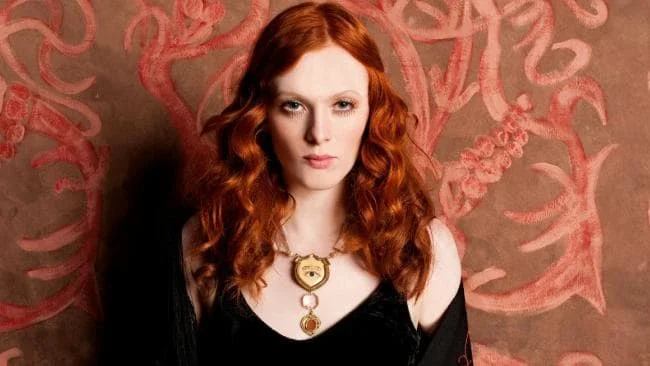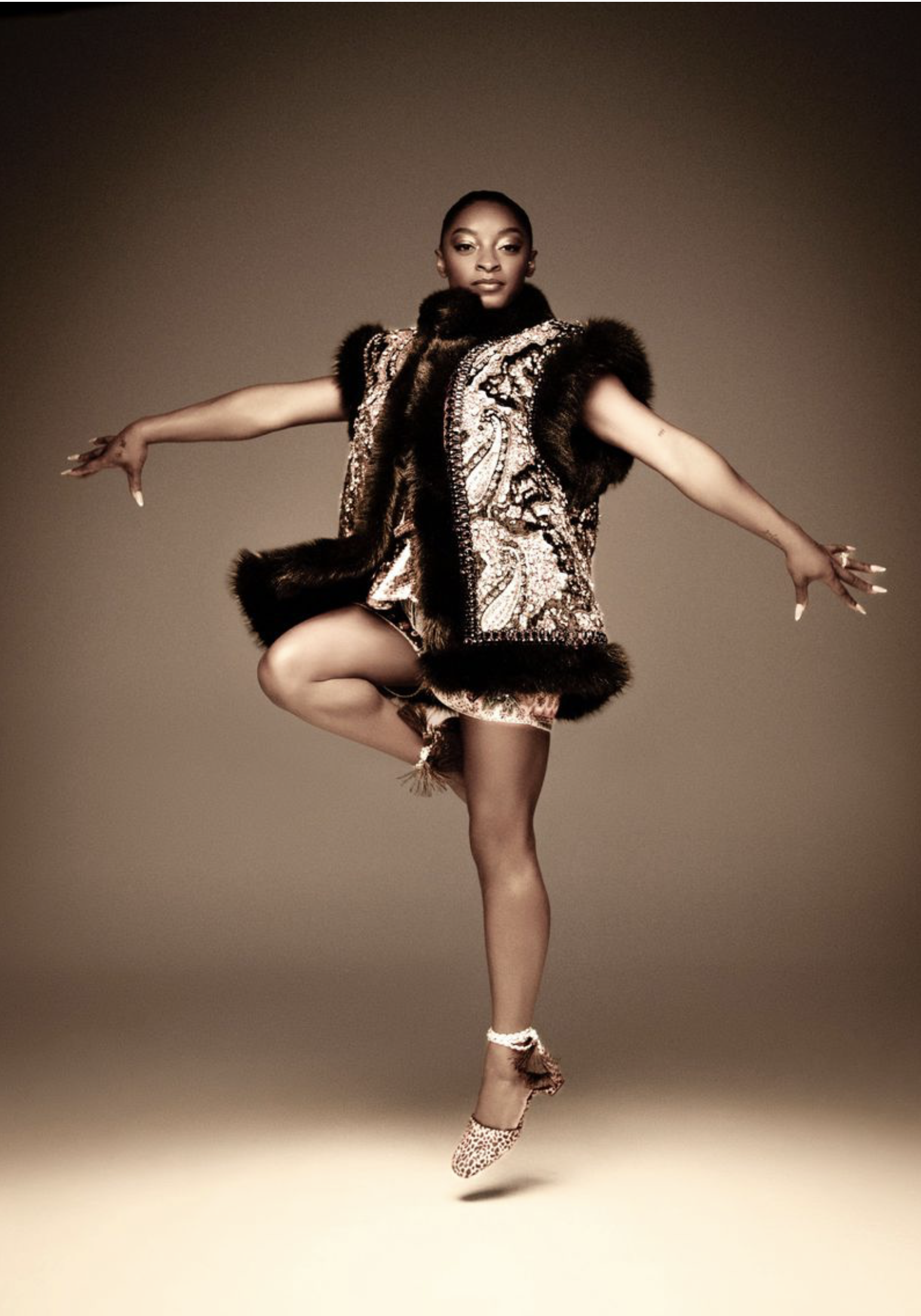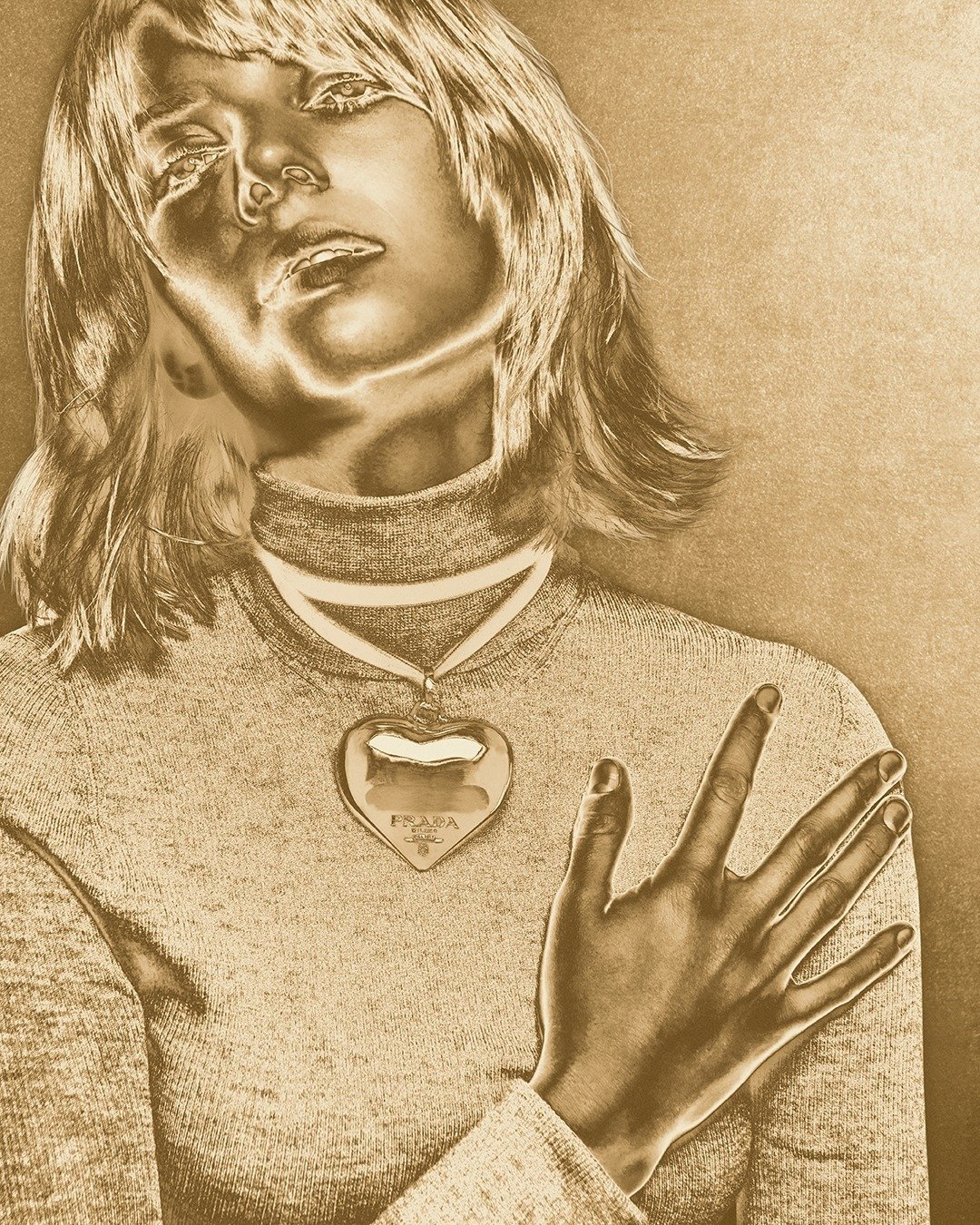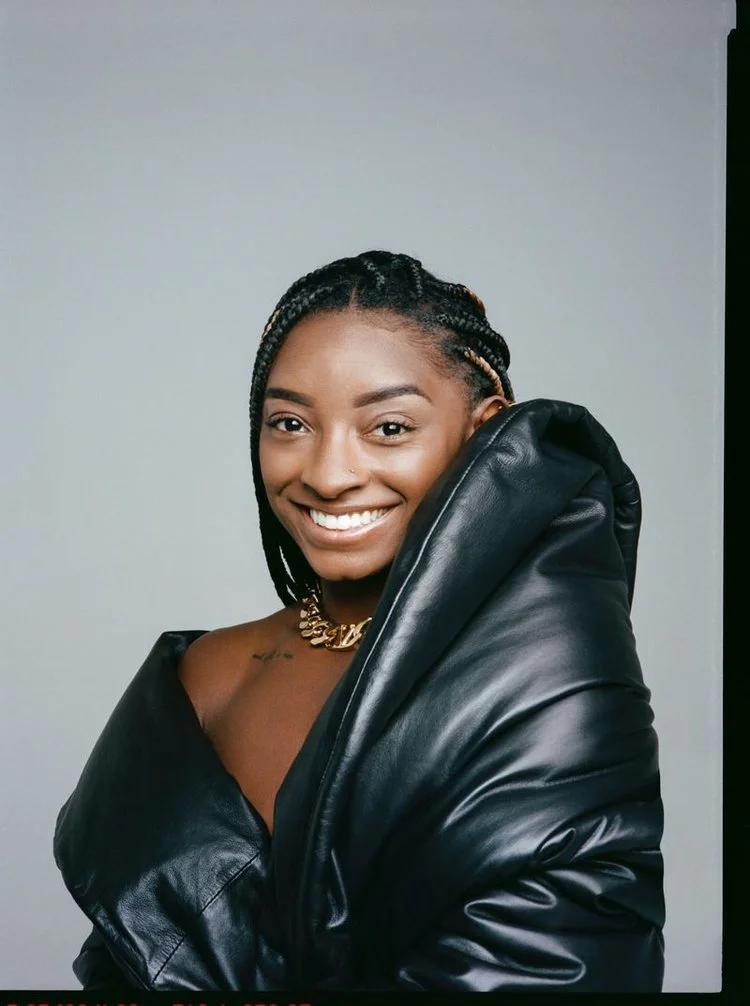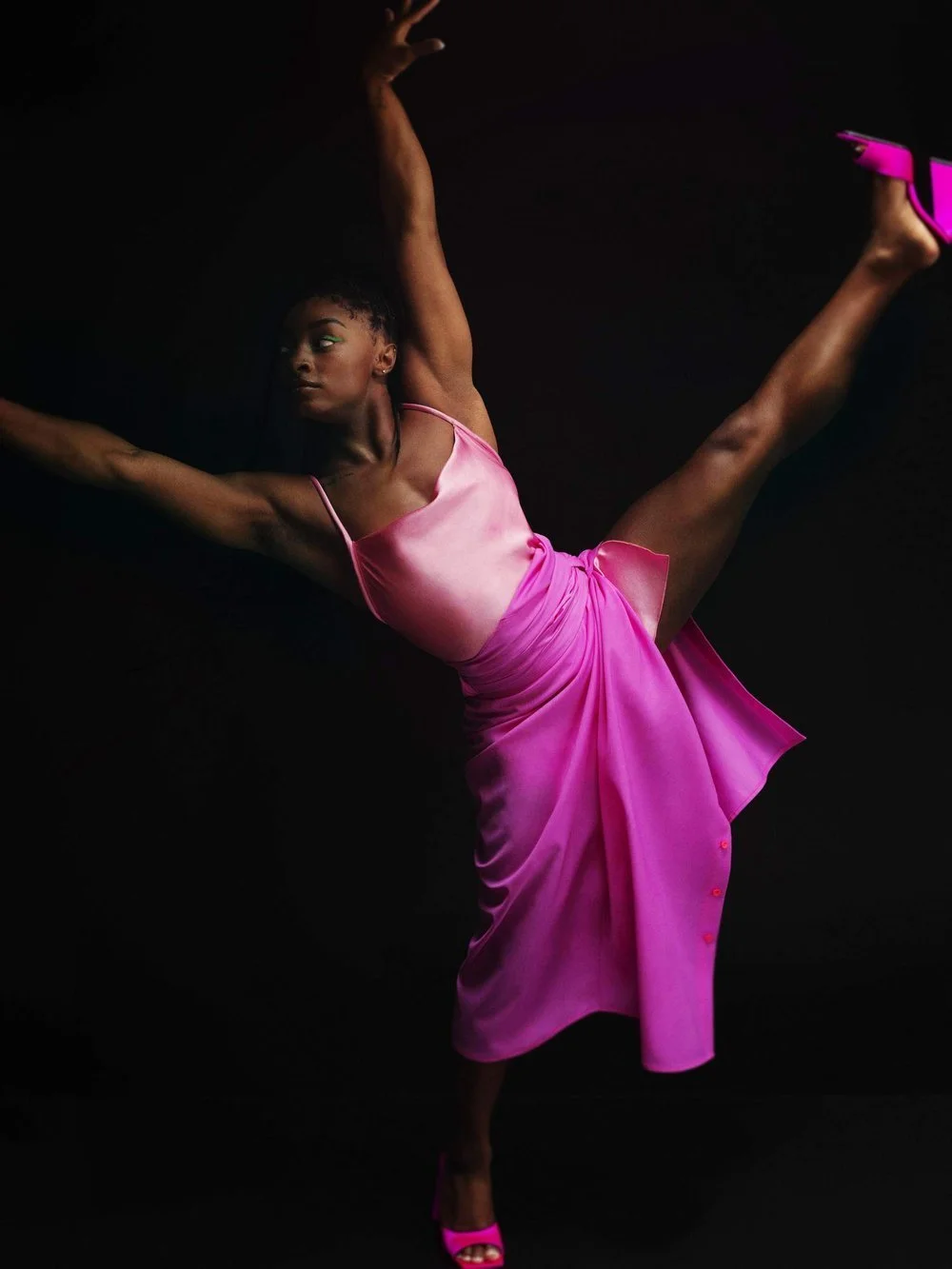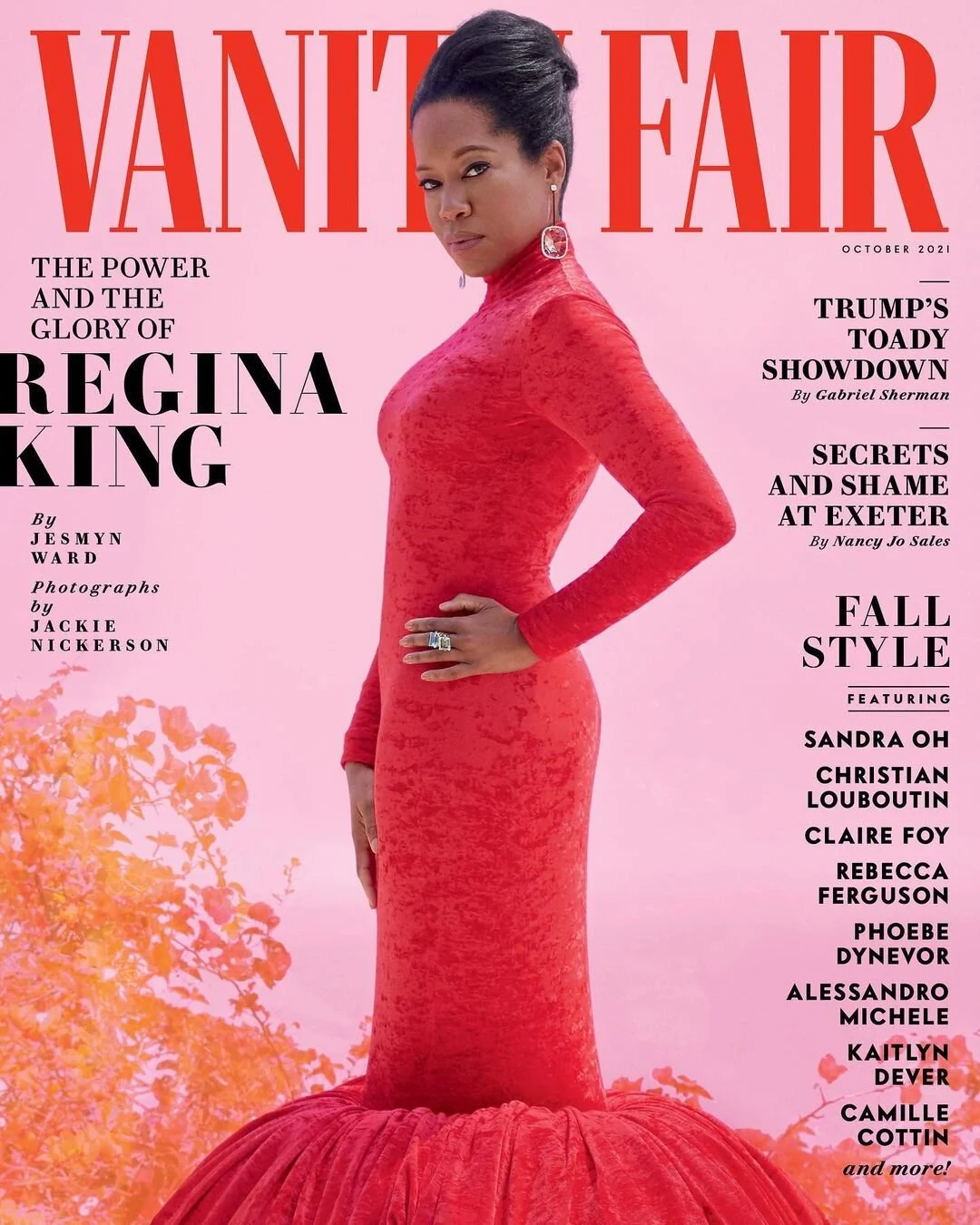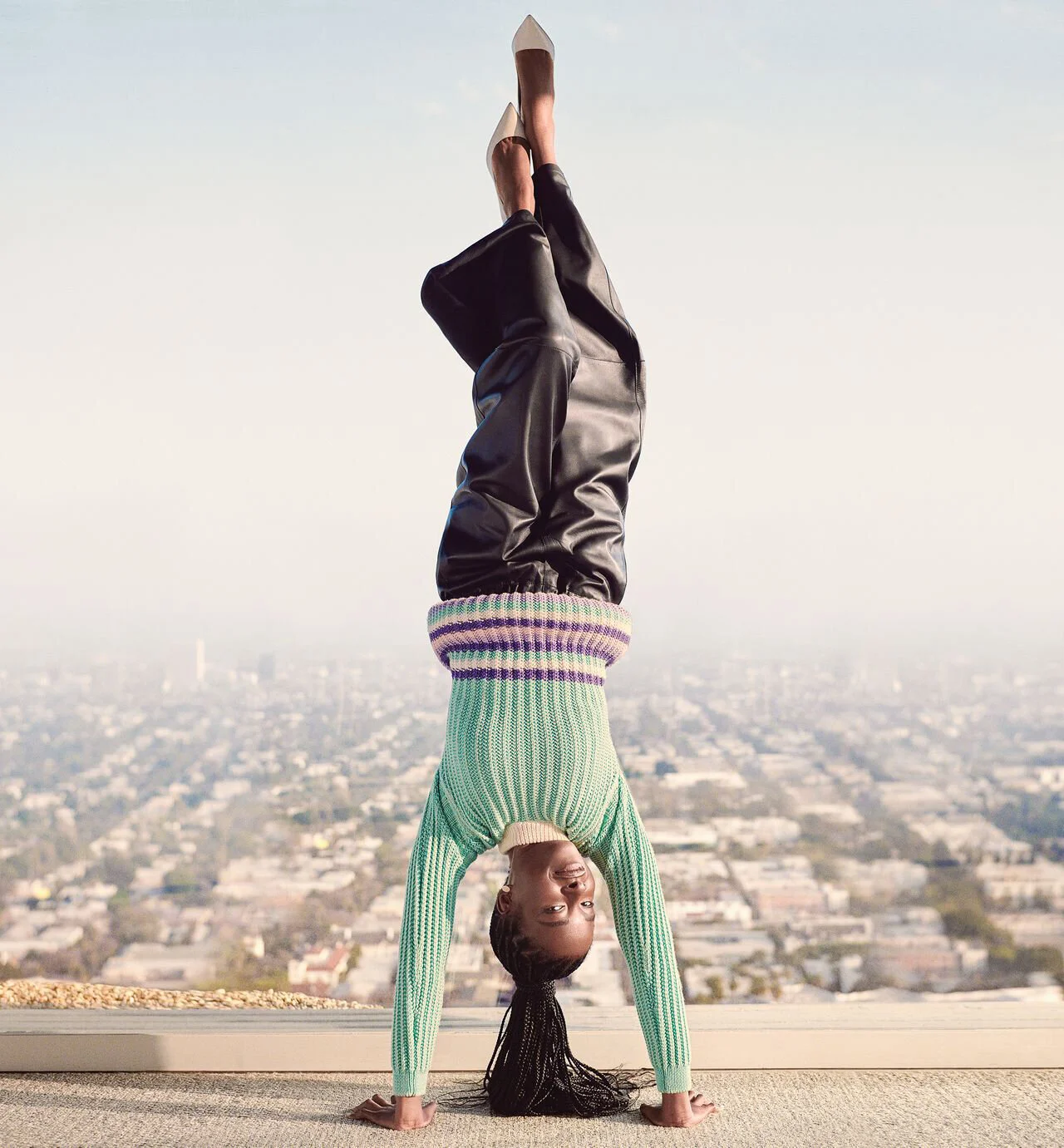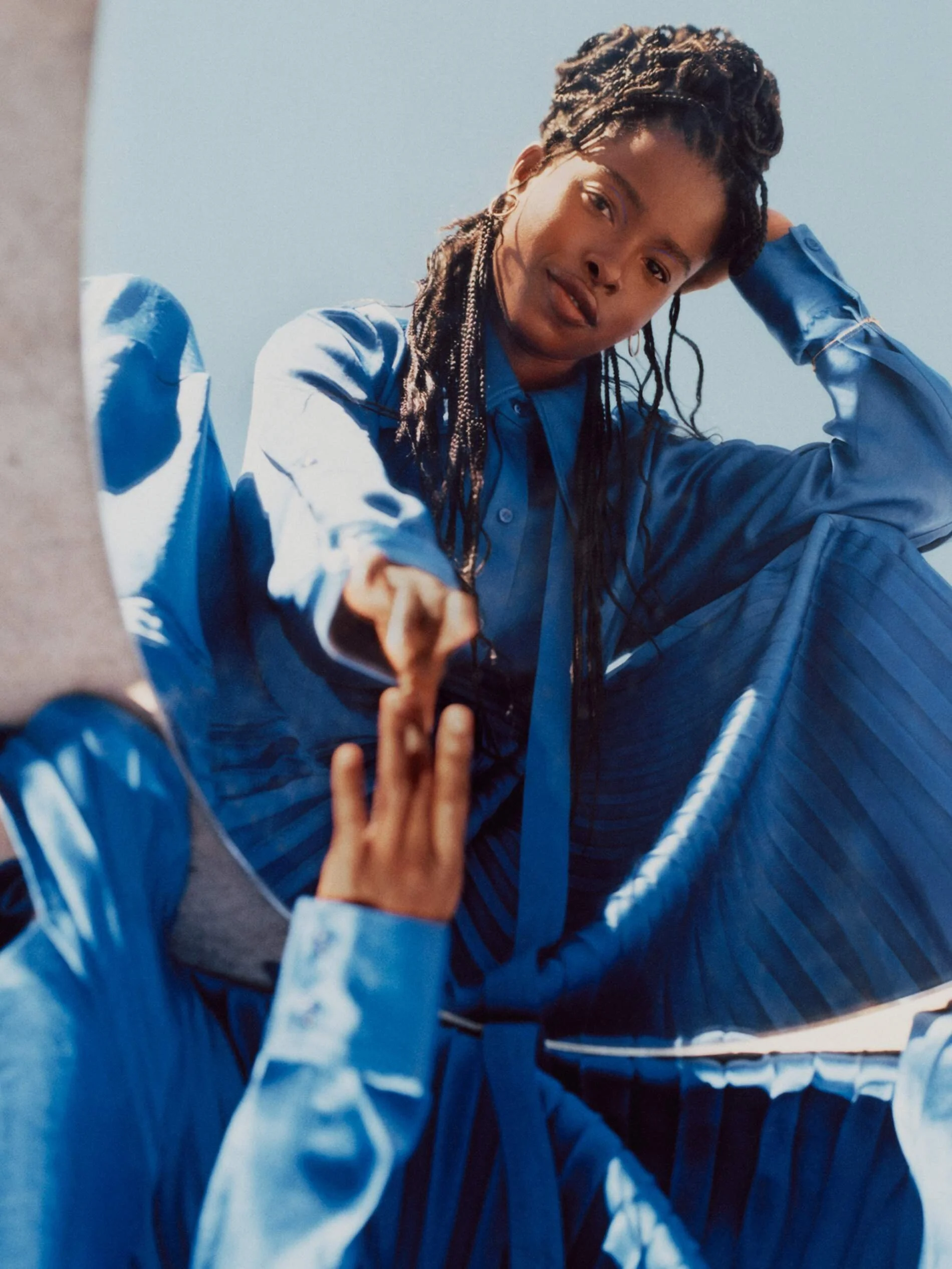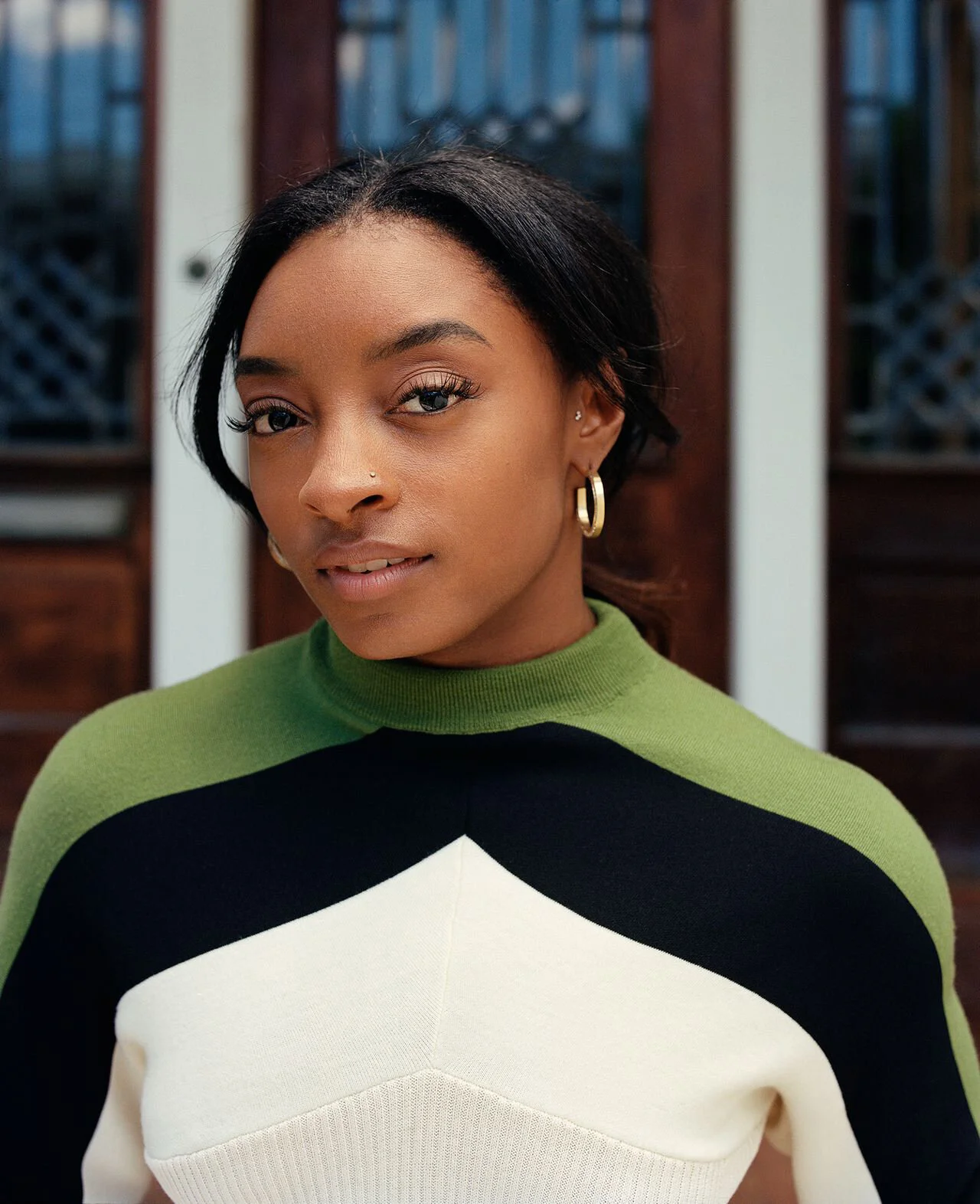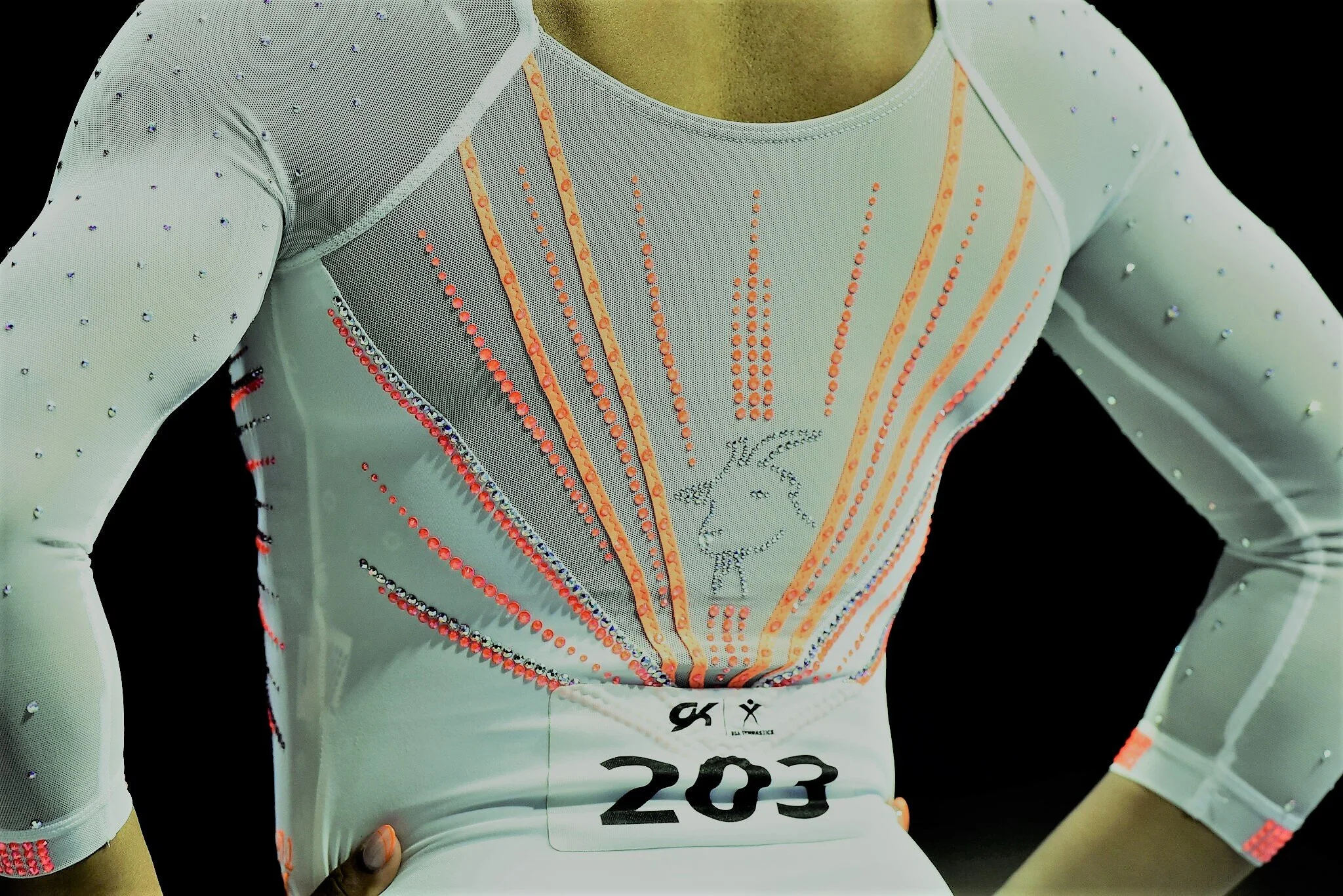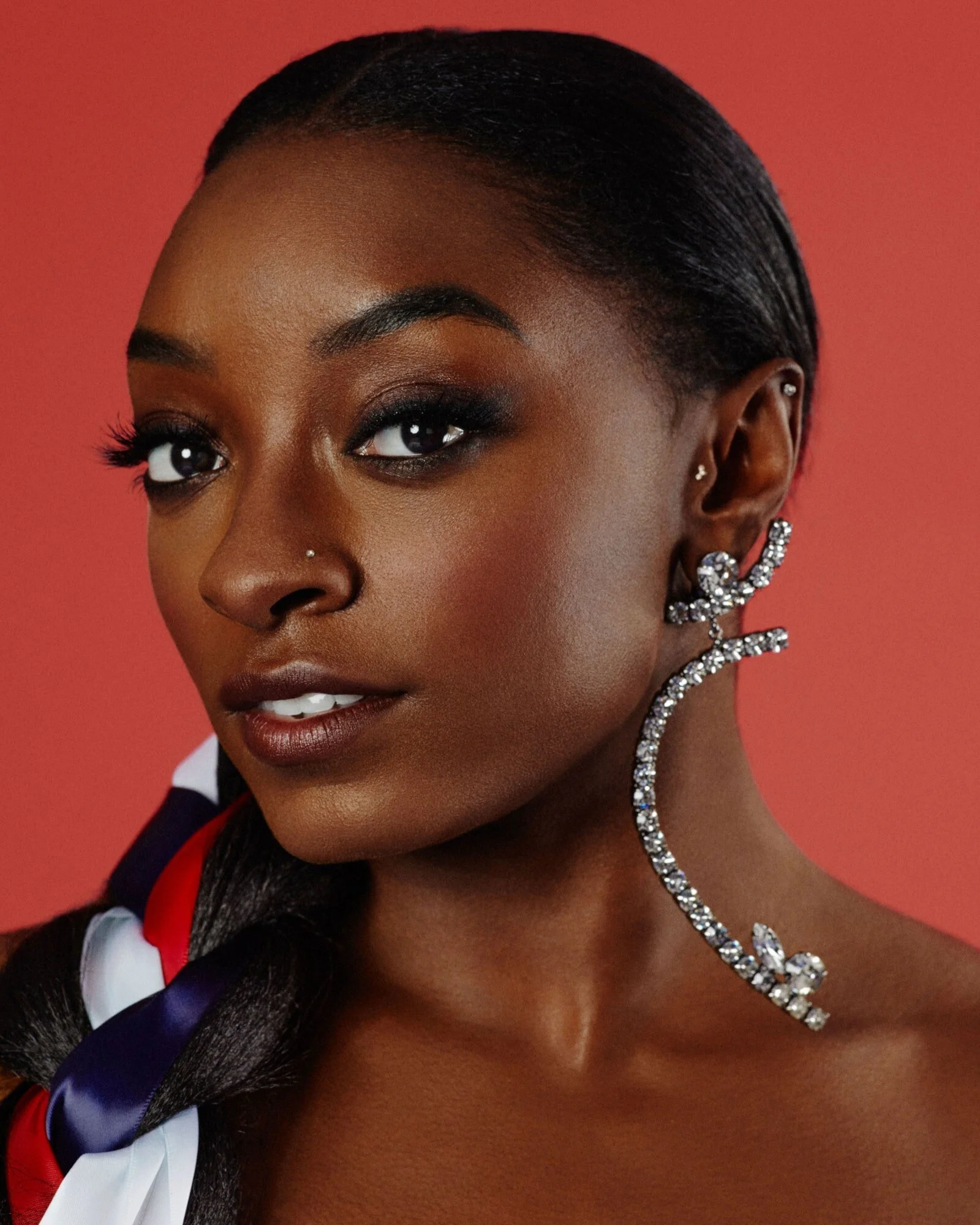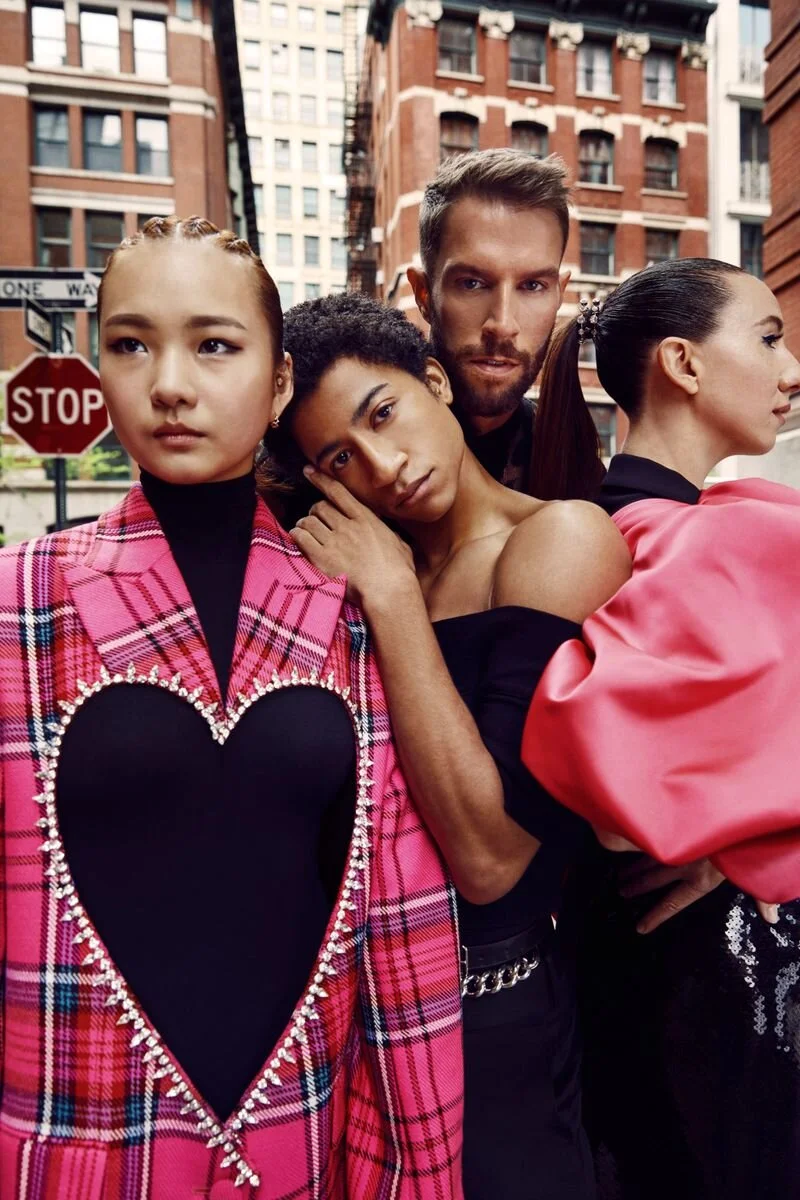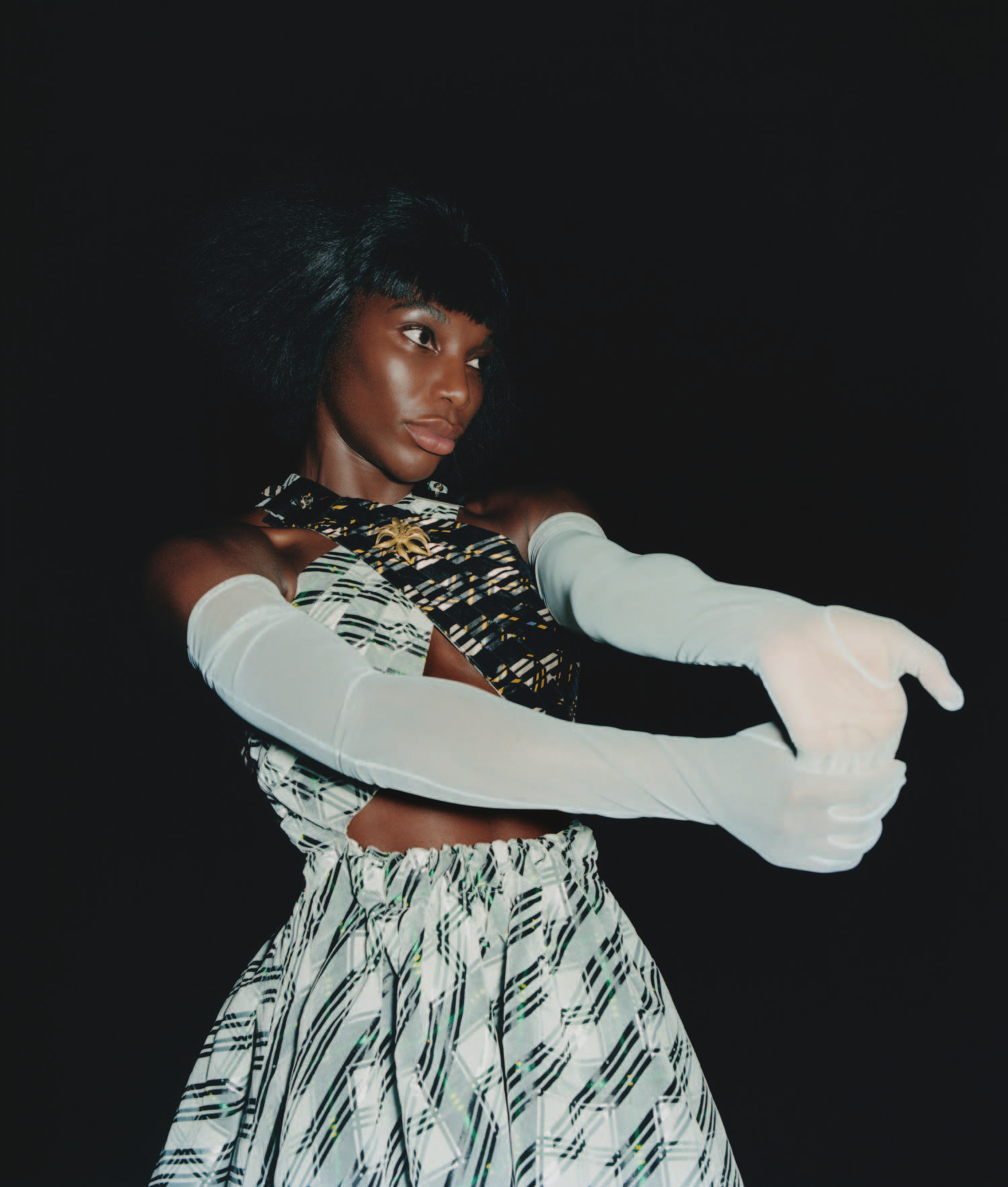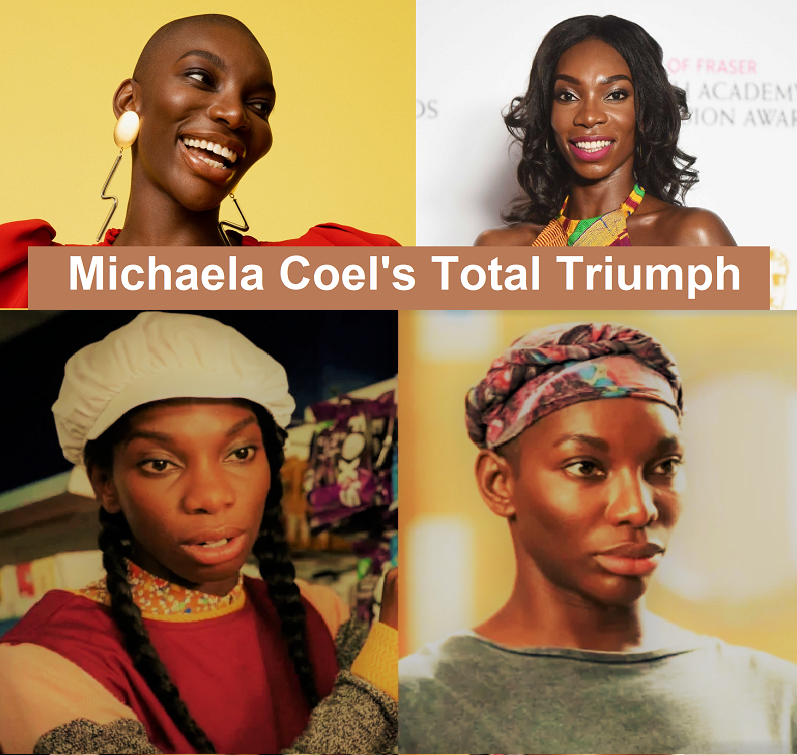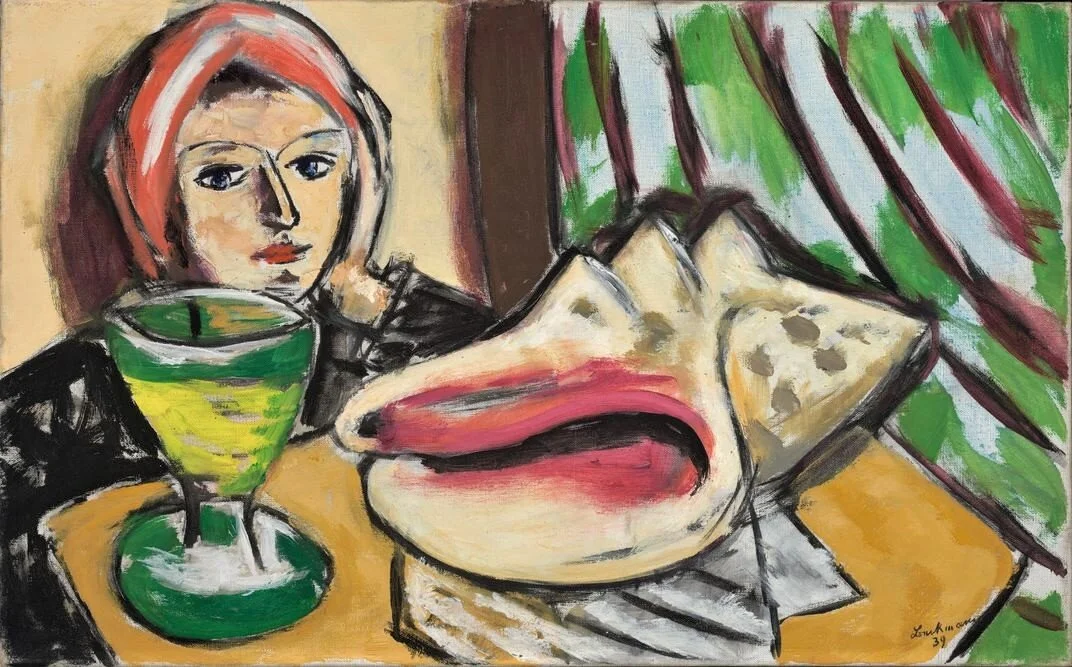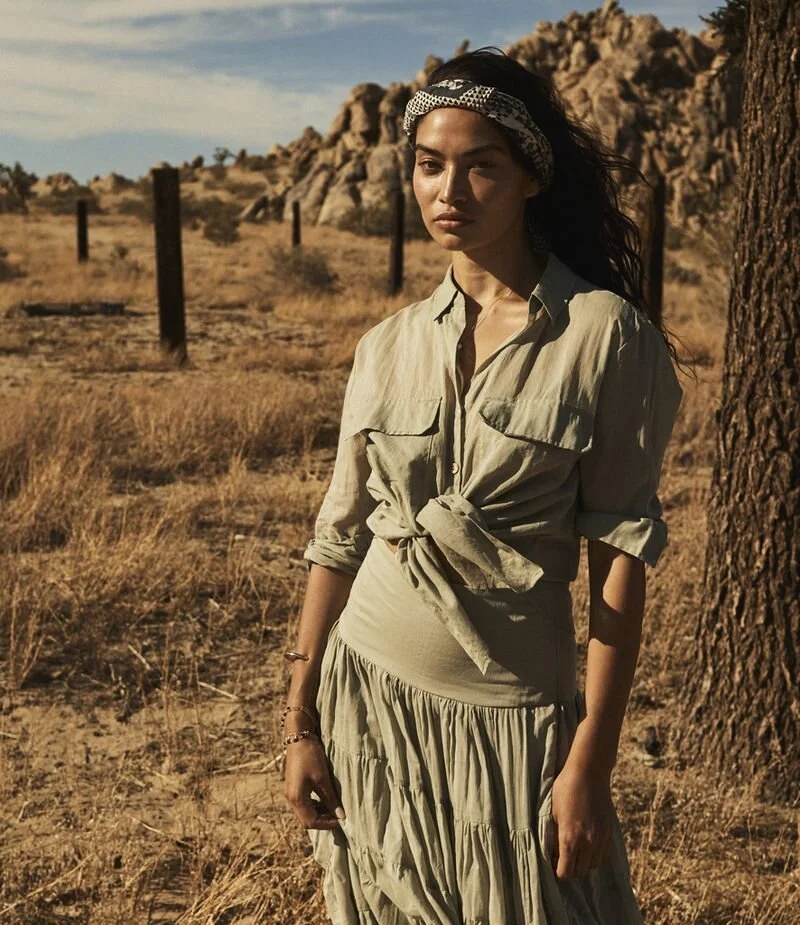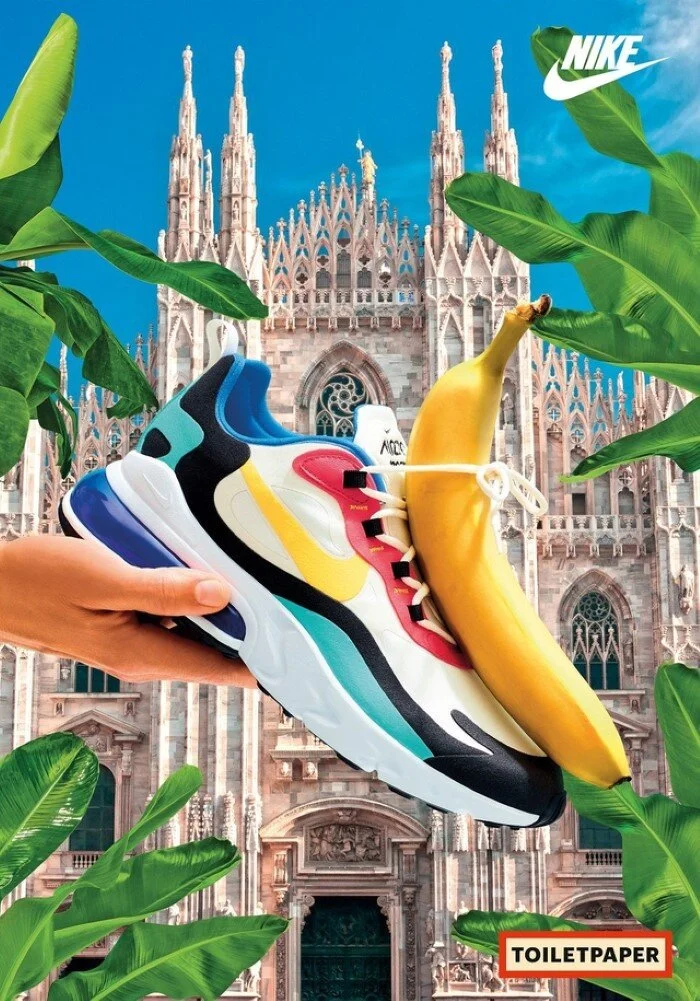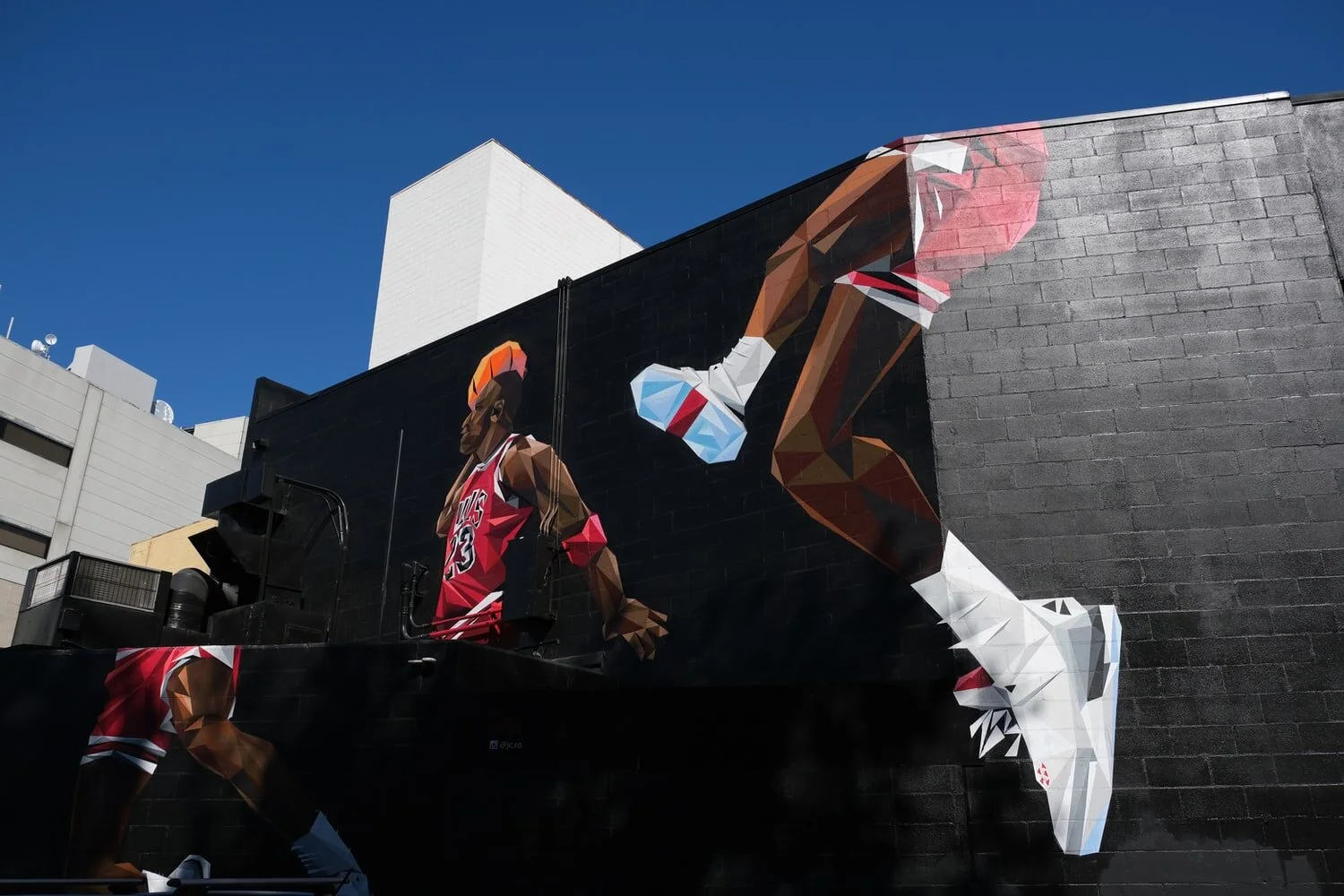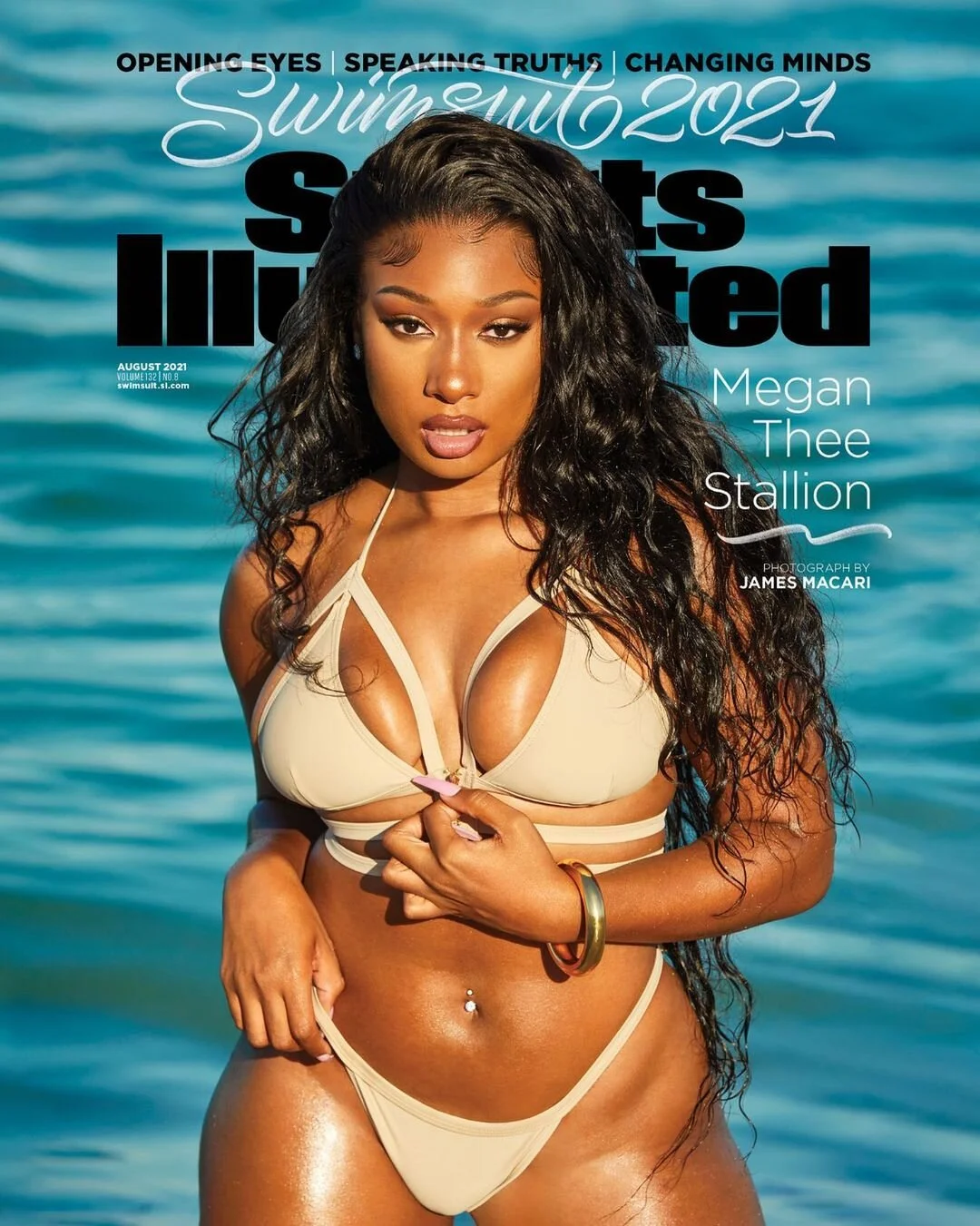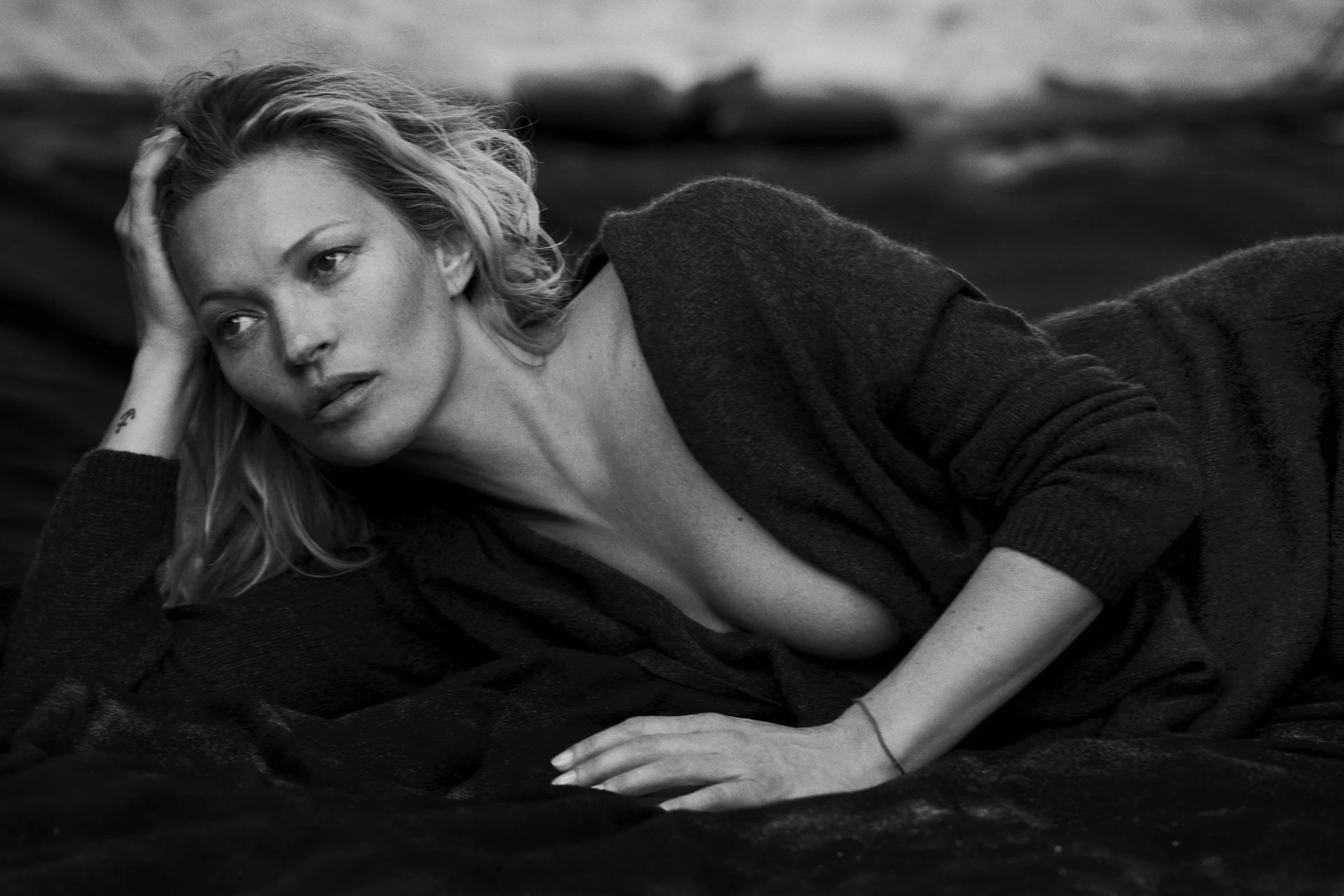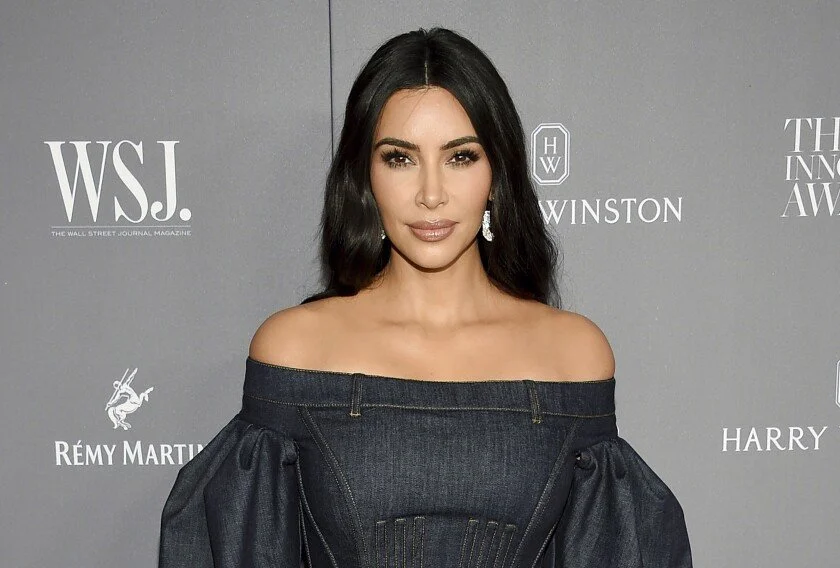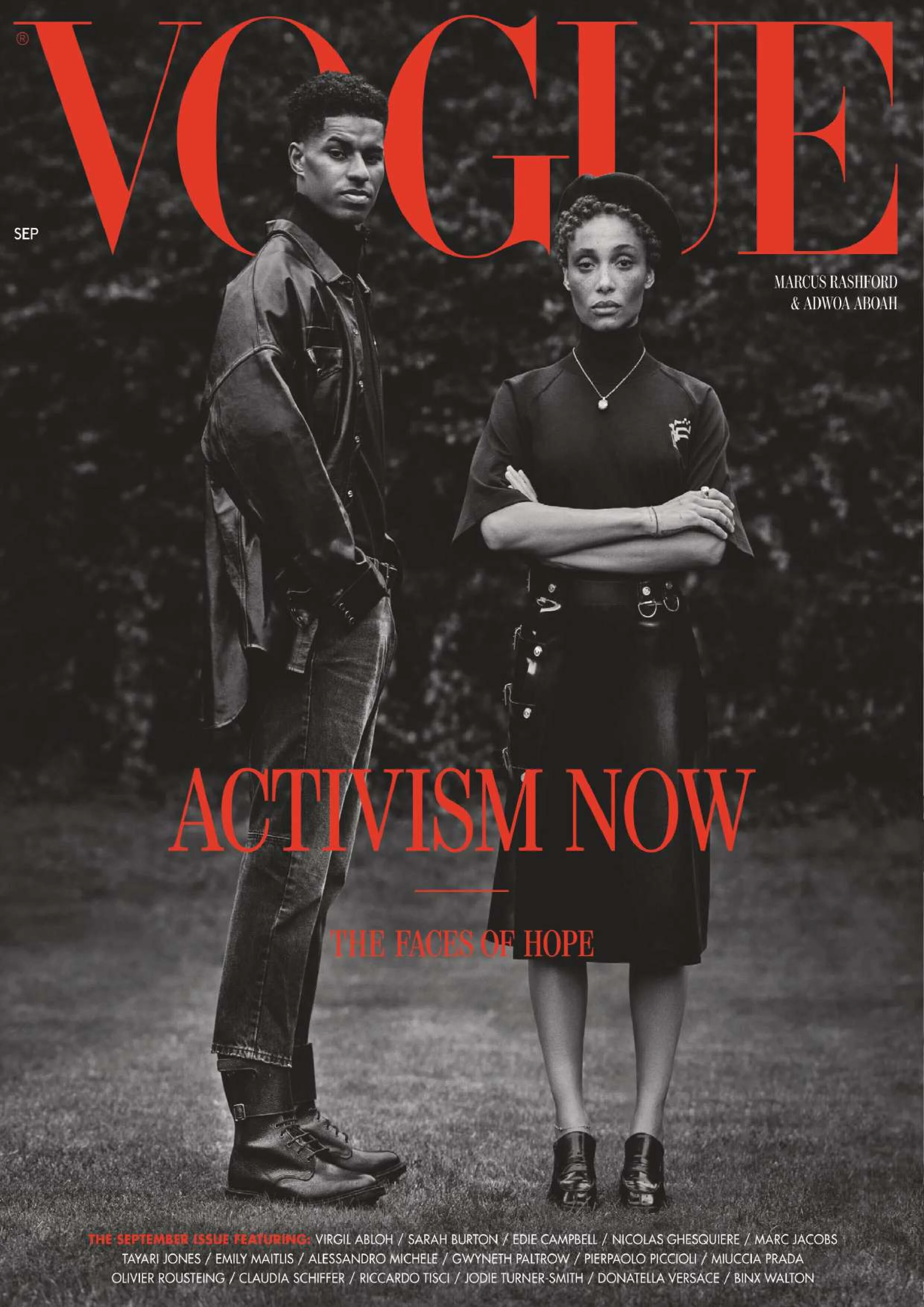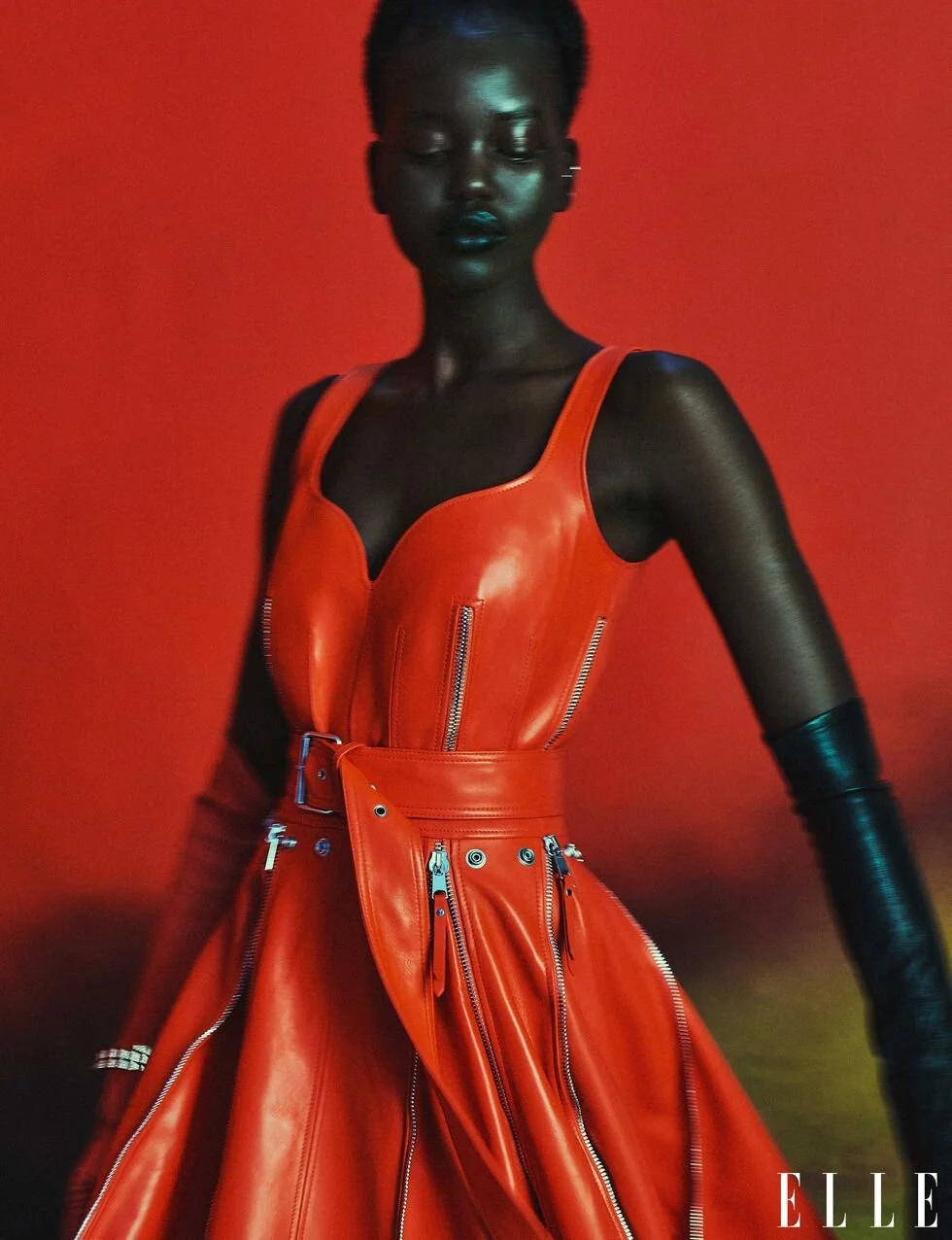Karen Elson Poses for InStyle September 2021, Talks New Pro-Karen Modeling Venture
/Republish via AOC at FeedBurner CC 3.0 License Attribution Required: Daily Fashion Design Culture News
Karen Elson Poses for InStyle September 2021, Talks New Pro-Karen Modeling Venture AOC Fashion
Supermodel Karen Elson poses on the subscribers cover of InStyle Magazine’s September 2021 issue. Elson is styled by Daniela Paudice in images by Yelena Yemchuk [IG]./ Hair by Recine; makeup by Romy Soleimani
This entire fashion story is fabulous. Elson looks fantastic and Yemchuk’s images are rich and powerfully beautiful.
InStyle’s Karen Elson interview ‘Karen Elson Has the Power’ by Laura Brown delivers a power punch paragraph.
After 18 months of the universally painful and isolating COVID-19 experience, the modeling industry has been one of the first to revert to less than empathetic behavior. So Elson did something radical: She left her agents and now represents herself. The boldness of the move cannot be overstated. Agents not only groom a model's career, they manage finances and travel, often breeding less independence than codependence. And that, of course, can be less than healthy..
I just reread The Cut — which is where we first read that Karen Elson is on her own. And now I’ve read the InStyle article. There’s nothing new in this piece about Karen Elson, her work with Model Alliance and all the great role model work that Karen Elson does.
Elson at large raises issues about models getting respect — and money. We know about Elson and the Model Alliance’s campaigns for better treatment for models. Elson has asked previously, why do models not get compensated in ways similar to photographers, for example? Elson is raising some very big questions about the world of modeling beyond respect and being treated with a bit of empathy. Her questions include long-term compensation for creative work that rains money years later.
It’s clear that InStyle EIC Laura Brown has a low opinion of model agencies. But there’s no smoking gun in the InStyle story. I’m speed reading, but there’s not one example of the modeling industry being “one of the first to revert to less than empathetic behavior”, post-COVID. That’s a strong statement, Ms. Brown. Examples would be nice to support your assertion.
The issues — especially the financial issues that Elson raises — have always been at the center of AOC’s commentary about the 80’s supers. Elson observes:
I look at someone like Maye Musk, who I'm obsessed with, and I think, "All right. She's 73 years old. She's badass. She's still doing it." And the norms are being finally pushed up against. I look at Precious Lee. I look at Paloma [Elsesser]. Even Kaia [Gerber], who's now acting. These girls have got so much more to offer than just their beauty. Something has shifted. I remember [casting director] James Scully said to me that in the '80s the models had all the power. They were the ones who were calling the shots, like Linda Evangelista: "I don't get out of bed for less than $10,000." I love Linda, by the way. She is the funniest person on the planet. But they were in charge, and then. Somewhere in the '90s it went to, "Oh, they've got too much power. We've got to smack them back down."
AOC — and Anne personally — have always maintained that the smackdown of models was real — that the industry did say that the supers had too much power (and money). The downsizing of size 4-6 models to size 0 was about far more than sample sizes and the growth of the Asian market where women are smaller.
When you strip supermodel bodies of healthy muscles for ‘heroin chic’ waifs, you are an industry smacking models down to size — literally. And you are stripping them of sexual power. It’s happened to every great goddess in history.
Karen Elson — like most of us — endured a period of intense reflection during COVID lockdown. Elson decided — and we APPLAUD her — that she wants to represent herself. I hope she creates a new paradigm of some kind for other models to follow.
Elson is a realist and given the personal goals she has created for herself, she believes she can do a better job of selling Karen Elson, than her old agency. And she wants some editorial control over her jobs. Saying no to one, doesn’t means she never gets another.
If Google and Apple have talented employees not wanting to work in an office five days a week and Morgan Stanley has MBAs saying ‘no’ to investment banking over no quality of life, it makes perfect sense that Karen Elson doesn’t want to leave her kids on her first getaway post-COVID and run to meet a photographer who decided that very morning that s(he) had to have HER. And could she hop a plain pronto. Elson said “no’. Her kids were more important.
It’s not as if a more empowered model industry never existed. Personally, I think feminism at large got derailed in the late 90s and women have been losing ground ever sense. As Elson points out, there’s some hopeful signs out there in fashion world right now.
It’s silly to make predictions. But many of us are watching very carefully to see how our post-COVID world defines itself. As one new variant hits after another, we may be living a new life for decades to come. Can fashion adjust? It will have to. ~ Anne
Declining Male Fertility and Growing Concern Over Impact of Environmental Toxins
/Declining Male Fertility and Growing Concern Over Impact of Environmental Toxins AOC Fashion
Male Fertility Decline
Infertility is defined as a couple’s inability to get pregnant for one year despite regular intercourse. When this is the case, doctors evaluate both partners to determine why.
For men, the cornerstone of the fertility evaluation is semen analysis, and there are a number of ways to assess sperm. Sperm count – the total number of sperm a man produces – and sperm concentration – number of sperm per milliliter of semen – are common measures, but they aren’t the best predictors of fertility. A more accurate measure looks at the total motile sperm count, which evaluates the fraction of sperm that are able to swim and move.
A wide range of factors – from obesity to hormonal imbalances to genetic diseases – can affect fertility. For many men, there are treatments that can help. But starting in the 1990s, researchers noticed a concerning trend. Even when controlling for many of the known risk factors, male fertility appeared to have been declining for decades.
In 1992, a study found a global 50% decline in sperm counts in men over the previous 60 years. Multiple studies over subsequent years confirmed that initial finding, including a 2017 paper showing a 50% to 60% decline in sperm concentration between 1973 and 2011 in men from around the world.
These studies, though important, focused on sperm concentration or total sperm count. So in 2019, a team of researchers decided to focus on the more powerful total motile sperm count. They found that the proportion of men with a normal total motile sperm count had declined by approximately 10% over the previous 16 years.
The science is consistent: Men today produce fewer sperm than in the past, and the sperm are less healthy. The question, then, is what could be causing this decline in fertility.
'Secular Girl' by Victoire Simonney and Anna de Rijk Makes Real-Life Fashion Point
/Republish via AOC at FeedBurner CC 3.0 License Attribution Required: Daily Fashion Design Culture News
'Secular Girl' by Victoire Simonney and Anna de Rijk Makes Real-Life Fashion Point AOC Fashion
Model Anna de Rijk appears as a ‘Secular Girl’, reminding AOC of fashion stories from a decade ago — stories with an undercurrent and something to say beyond “buy me”.
If AOC could have one wish around fashion media, it would be for more ideas to be expressed in fashion pages, moving them beyond selling stuff, with no other purpose. I frankly don’t care if a high-end flower delivery services sponsors fashion stories. There’s no need to dumb everything down to a box of Fruit Loops.
The 2010 forward fall-off of “statement” fashion stories was dramatic to watch. Granted, AOC scans published work with a very critical eyes. Yet images as simple as these — photographer and stylist Victoire Simonney’s ‘Secular Girl’ is — caught our eye, prompting a visit to Sixteen Journal, where we read: “Victoire Simonney studies womanhood and identity in ‘Secular Girl’ story. Then on to Simonney’s IG.
As a deeply-political women’s rights and racial justice activist, I worry that the right-wing is winning — based on new laws in red states. As we speak, the Georgia state government is moving to take over voting in Fulton County in Atlanta — home to the largest Black population in the state.
America’s right-wing is trying to destroy confidence in voting in the US, while it pursue its authoritarian agenda. With its commitment to storytelling generally, Sixteen Journal [IG] becomes a relevant chef in the creative discussion.
Rev. Dr. Barber II, Beto O'Rourke on First Leg of 27-Mile Texas Voter Rights March to Austin
/Republish via AOC at FeedBurner CC 3.0 License Attribution Required: Daily Fashion Design Culture News
They're off in Texas — marching south from Georgetown to Austin over four days, led by Rev. Dr. William J. Barber II and and former presidential candidate Beto O’Rourke. The early stage of the Georgetown-to-Austin March for Democracy is limited to about 100 people, because they are practicing social distancing, masking -- all the protocols.
I know how I felt coming out of a torrid session in the gym today. In the 93-degree heat, all I wanted was to get home as quickly as possible. So I worry about Rev. Dr. Barber. I just do. He's such a great leader, and I worry about him the same way I worry about Simone Biles, every time she goes into orbit.
I can't imagine Rev. Barber walking all that way in this heat. I trust they have air-conditioned medical vans with them, in case anybody has a heat stroke.
It's so sad that America has come to this place again. Texas already has the most restrictive voting laws in America. But for Texas Republicans, they're not strict enough.
It blows my mind frankly, in 2021. I never thought it would be like this with our beloved country totally divided. Stupid me.
I'm so sorry Texas Democrats. I'll be praying for Rev. Dr. Barber. He dishes it out with concerns for his people. But given the temperature in Texas, he needs us praying for him and his wellbeing. Beto O’Rourke, I’m not worried about.
Make good trouble, my fellow Americans. We’re with you in spirit, and AOC will be following you to Austin. ~ Anne
Follow the March at the Texas Tribune: Voting Rights Activists Begin Selma-to-Montgomery-Style March in Texas
Amanda Gorman's 'Call Us What We Carry', Simone Biles and Weight of Expectations
/Republish via AOC at FeedBurner CC 3.0 License Attribution Required: Daily Fashion Design Culture News
Dec. 7, 2021 Publication Date for ‘Call Us What We Carry’ by Amanda Gorman
Amanda Gorman, featured this week’s cover story for Net-a-Porter, will release a book of poetry ‘Call Us What We Carry’ on December 7, 2021. The 80-page collection, formerly titled ‘The Hill We Climb and Other Poems’, will include her famed 2021 President Joe Biden inaugural poem, while exploring new “themes of identity, grief, and memory.” According to the publisher Viking Books, an imprint of Penguin Random House, Gorman will narrate the audiobook, which will be published concurrently by Penguin Random House Audio.
The Lyrics of Hope
Gorman’s poetic elegance, rich with connection and insights into America’s deepest wounds and achievements, will continue to express itself in a hopeful way in ‘Call Us What We Carry’.
Gorman, who was appointed the first National Youth Poet Laureate in 2017 and was the United States’ youngest inaugural poet, said: “I wrote ‘Call Us What We Carry’ as a lyric of hope and healing. I wanted to pen a reckoning with the communal grief wrought by the pandemic. It’s been the hardest thing I’ve ever written, but I knew it had to be. For me, this book is a receptacle, a time capsule both made by and for its era. What is poetry if not a mirror for our present and a message for our future?”
In Monday’s Net-a-Porter interview, Amanda Gorman added energy and direct purpose to the definition of being a poet. “I often call it ‘poeting’ because, for me, it is to get involved in a movement. I think back to Audre Lorde, who was so wise in saying that it’s the poets who create a language for pains, emotions and solutions.”
Amanda Gorman and Simone Biles
It’s impossible for AOC not to reflect on Amanda Gorman and Simone Biles in the same thought bubble. Gorman spoke on Twitter to Tuesday’s news that The GOAT Simone Biles was dropping out of the team competition at the Tokyo Olympics, over mental health concerns.
Retweeting Meena Harris, Amanda rolled many current events related to Biles’ life into one analytical opinion, and we’ll leave the analysis on Gorman’s Twitter feed.
What is relevant to me about the two women’s mutual stardom is the incredible weight it puts on their shoulders as humans, as women, and as Black women who have avidly grabbed the torch of leadership in America.
I heard a Black woman host on MSNBC declare last week that Black women hold up half the world.
My response to her staggering mathematical hyperbole was to think of Simone Biles, one of several star Black women athletes cited by the host. The pressure on Biles and Gorman comes from people — and especially women — of every skin color. There are MANY white women who think the world of both young women. Of course Black women are especially proud and thrilled with their success. But it seems unwise to build such territorial walls around the best of humanity that a wide swath of humanity can’t celebrate them.
More Amanda Gorman and Simone Biles
American Ballet Theatre Dancers by AB+DM for InStyle July 2021
/Republish via AOC at FeedBurner CC 3.0 License Attribution Required: Daily Fashion Design Culture News
American Ballet Theatre Dancers by AB+DM for InStyle July 2021 AOC Fashion
The first ‘to do’ in reading ‘Ballet Is Back, Baby’ a fashion story shot by AB+DM for Instyle US and published early June online for the July issue, is to verify the facts. Julia von Boehm styles dancers from American Ballet Theatre in a heady mix of Alexander McQueen, Commando, Dolce & Gabbana, Fendi, Givenchy, JW Anderson, Khaite, Mônot, Spanx,Thom Brown and more./ Hair by Shin Arima; makeup by Frankie Boyd
The Dancers include Isabella Boylston, ABT Principal Dancer; James Whiteside, ABT Principal Dancer; ABT Corp dancers: Anabel Katsnelson, Betsy McBride, Emily Hayes, João Menegussi, Melvin Lawovi and Yoon Jung Seo, ABT Studio Corps.
“Verifying the facts” refers to a bus tour select American Ballet Theatre dancers were scheduled to make across America, as they faced another cancelled official season in 2021.
In fact, the #ABTAcrossAmerica US tour did happen — at outside venues and not the predictable ones for a ballet tour. These shots on ABT’s IG — not in geographical order — show the dancers bringing joy to lawn-lovers in Minneapolis, MN; Middleburg, VA; Chicago, MI; Iowa City, IA; Lincoln NE. Other stops included St. Louis, Mo and Charleston, SC. The dancers made it back to New York City for a special closing performance last week, July 21.
Amanda Gorman by Kennedi Carter in Porter Edit Talks Connecting Fashion and Activism
/AOC feels like we’re looking at tomorrow’s creative Black titans in Porter Edit’s July 26 issue. marriage of celestial light. Biden-Harris 2021 inauguration Day poet Amanda Gorman is lensed by photographer Kennedi Carter.
Carter shot Simone Biles for Glamour Magazine’s June cover story, and now she roars in with Amanda Gorman in tow. Not too shabby Ms. Carter. It makes AOC feel really, really great about all this Black Girl Magic.
In her Porter Edit interview with Kadish Morris, Gordan speaks about her upcoming honor as co-chair of the Met Gala, Monday September 13, sharing duties with Billie Eilish, Naomi Osaka and Timothée Chalamet.
Read MoreAn Injured Simone Biles Pulls Out of Team USA at Tokyo Olympics
/Doug Mills/The New York Times
USA Gymnastics team powerhouse Simone Biles has pulled out of the team competition at the Tokyo Olympics. Biles bailed out of her Yurchenko vault with 2 1/2 twists, downsizing the difficulty to 1 1/2 twists and then stumbling out of the landing Tuesday evening.
Biles left the competition floor with a team trainer, while coach Cecile Landi, gathered the team. Biles returned to the floor, rejoining her teammates, hugging them before watching them perform their routines from the sideline.
Team USA will compete for their their consecutive Olympics gold medal without Biles. Follow all the Olympic competition from the New York Times.
Nominated for 3 Emmys, 'Misfits' Book Dropping Sept. 7, Michaela Coel Joins Black Panther
/Michaela Coel Goes to Wakanda
Variety broke the news on July 21 that Micaela Coel has joined the cast of Black Panther: Wakanda Forever’. Details of her character are in the lock box, but the actor as joined “director Ryan Coogler at Atlanta’s Pinewood Studios, where production began last month,” writes Matt Donnelly.
Michaela Coel’s 3 Emmy Nominations
The Michaela Coel show continues to roll on, with the news that the actor, director, screenwriter received three nominations for ‘I May Destroy You’. Broadcast on Sunday, September 19 on CBS, Coel has been nominated for Outstanding Directing For A Limited Or Anthology Series Or Movie - 2021; Outstanding Lead Actress In A Limited Or Anthology Series Or Movie - 2021; and Outstanding Writing For A Limited Or Anthology Series Or Movie - 2021.
In December 2020, Michaela Coel was part of an impressive creative presentation by The New York Times Magazine, with its focus on today’s best actors. The magazine writes: “With ‘I May Destroy You,’ she set out to disturb, first by making us laugh, then by going to all kinds of extremes.”
‘Misfits’ Book Out September 7
The talented creative’s book ‘Misfits: A Personal Manifesto’ is due out September 7, 2021 in British and American bookstores.
The book will focus on topics covered in Coel’s MacTaggart lecture at the Edinburgh Festival in 2018. In her speech, which drew audible gasps from the audience, Coel spoke in astounding clarity and factual detail about the barriers and racism she had experienced as a young black woman working in the television industry, as well as her own sexual assault.
A video of the speech is embedded in AOC. The Guardian quotes British publisher Ebury saying that in the book [Coel] “makes a compelling case for radical honesty”. It will be a rousing and bold case against fitting in and a powerful manifesto on how speaking your truth and owning your differences can transform your life.”
New Series in Work for BBC UK Drama Unit
Lastly — for the moment — the BBC UK said in May that Michaela Coel is working on a new television series.
“It’s truly in Michaela’s head and it’s not for me to second guess that too much at this point,” the network’s drama chief Piers Wenger responded to questions about the plot’s potential ties to ‘I May Destroy You."‘ “It’s at relatively early stages, but I wanted to let the fans of ‘I May Destroy You’ know that there is a new show coming along…What relationship that show will have with the original series, [is for Michaela to decide].”
Maria Borges on Life's Journey by JD Barnes for Harper's Bazaar Vietnam July 2021
/Maria Borges on Life's Journey by JD Barnes for Harper's Bazaar Vietnam July 2021
Model Maria Borges covers the July 2021 issue of Harper’s Bazaar Vietnam. Danielle Hawkins styles Borges in Bronx & Bronco, Christian Siriano, Dolce & Gabbana, Miu Miu and more lensed by JD Barnes [IG] in St. Croix. Hair by Hos Hounkpatin; makeup by Porsche Cooper
Maria Borges was born in 1992 in Angola, a country devastated by civil war lasting from 1975 yo 2002. Borges became a model in 2010, winning runner-up in the Angola Elite Model Look competition. Just three years later, Forbes Africa Magazine placed her at the top of their rising models list.
The Angolan beauty’s mom died at age 11 and her father wasn’t part of Maria’s life. Her sister took over managing the family household at age 16, with help from their uncle to paid for school. Maria’s 2010 win with Elite Model Look Angola tethered her to an agency in Portugal, allowing her to travel to Europe for work.
Eventually Borges settled in New York in 2013, signed to Supreme Management after she booked 17 shows in her first New York Fashion Week. In August, 2013 Fashionista first sat down with the model in New York, where she credited Riccardo Tisci, James Scully and Katie Grand as her ‘godfathers’ and ‘godmothers’.
'Guarding the Art' Security Officers Become Curators at Baltimore Museum of Art
/By Anne Enke, Anne of Carversville
Republish via AOC at FeedBurner CC 3.0 License Attribution Required: Daily Fashion Design Culture News
'Guarding the Art' Security Officers Become Curators at Baltimore Museum of Art AOC Living
Seventeen museum security officers at the Baltimore Museum of Art are set to curate an exhibition “Guarding the Art”, opening in March 2022. The guards have access to some 95,000 artifacts in a variety of eras, mediums and cultures held by the BMA in a show provocatively poised to challenge the idea that only professional, academically-educated curators are qualified to produce exhibitions.
“The vast majority of people have a relationship to creative production that is intimate,” BMA director Christopher Bedford tells ARTnews. “In a sense it’s an experimental show, but it’s also entirely sensible given the familiarity the guards have with the objects.”
The initial press release about the exhibit is provocative, on its own. How many times have we observed or interacted with security guards at a museum without considering them as chefs, musicians, writers and more — creatives and scholars in their own right? What do we as museum visitors assume about their own scope of knowledge and insights about the experience of art?
Not much — after all, they’re security guards. There are flourishing opportunities for online dialogue and discussions on this concept of museum visitors perceptions of security guards and even vice versa. As close as I am to the social justice movement for decades as a core plank of my life, I never considered museum security guards as being creative talents in their own right. Now, the idea seems so self-evident — as creatives frequently struggle to pay the rent with their chosen talent.
Do we imagine that security guards are reading books or researching online about paintings or artifacts that inspire them? Many museum visitors do know that the security guards are often significant intellectual resources, endowed with a sometimes deep understanding of important paintings — as well as highly relevant but often overlooked paintings — in a museum.
The range of interests and primary vocations of the museum’s security guards drives the eclectic mediums beyond paintings that will be featured in the show.Several of the guest curators seek works that speak to social justice, resilience during times of crisis and also the environment.
“As guest curators, the officers will be collaborating with leadership and staff across the museum to select and reinterpret works from a variety of eras, genres, cultures, and mediums—offering a particularly human-centered lens through which to consider the objects. In addition, the team is working with renowned art historian and curator Dr. Lowery Stokes Sims, who is providing additional mentorship and professional development.” via press release
The 17 officers who elected to participate are Traci Archable-Frederick, Jess Bither, Ben Bjork, Ricardo Castro, Melissa Clasing, Bret Click, Alex Dicken, Kellen Johnson, Michael Jones, Rob Kempton, Chris Koo, Alex Lei, Dominic Mallari, Dereck Mangus, Sara Ruark, Joan Smith, and Elise Tensley.
The idea of the exhibit is so innovative to AOC. Indeed, the participating officers do offer a particularly human-centered lens through which to consider the art objects. In addition to the personal and deep interaction officers have had with the offerings, they have invaluable insights into the observed behavior and interactions of countless museum visitors looking at the same art objects. Their questions of the security team at the Baltimore Museum provide yet another avenue of information about public response to the items that will be featured in “Guarding the Art.” ~ Anne
Related:
Shanina Shaik Wears Earth Goddess Style for Anthropologie Late Summer 2021
/Model Shanina Shaik is lensed by Adam Franzino [IG] in Anthropologie’s July 2021 look book.
AOC is surprised that Anthropologie doesn’t even have a statement on sustainability on their website. We always search a new post for news in the last 30 days. In this case, PETA was staging a major protest at the Kansas City Anthropologie on July 12.
PETA is demanding that Anthropologie and all other Urban Outfitters, Inc brands — including Free People—”leave alpaca fleece, wool, leather, mohair, cashmere, and down to their original owners.”
Read MoreThe Enduring Popularity of Air Jordans and 'His Airness'
/By Anne Enke, Anne of Carversville
Republish via AOC at FeedBurner CC 3.0 License Attribution Required: Daily Fashion Design Culture News
Air Jordan Is Nowhere Near Its Last Dance
NBA star MIchael Jordan has made over $1.3 billion from Nike, an estimated sum Forbes magazine calls "the biggest endorsement bargain in sports".
As the richest athlete endorsement deal ever, the Chicago Bulls superstar NFL player Michael Jordan did as much for Nike, as the Nike Swoosh did for him. Note the the Swoosh disappeared in the second year of the shoe, prompting Air Jordans and Jordan Brand to thereafter draw "inspiration from jets and sports cars, jazz and even wildlife," writes the Chicago Tribune, who offers one of many histories of Air Jordans on the Internet.
The History of Flying Men
Icarus: Perhaps you’ve heard about Icarus. In Greek mythology, Icarus attempted to escape from Crete flying with wings made of feathers and wax. His father Daedalus warned Icarus first of complacency and then of hubris and lack of awareness.
Literally, Icarus was to fly in the middle of the sky. Too close to the water, the wax would harden and clog his wings. If Icarus flew to high and close to the sun, the wax in his wings would melt, After takeoff, Icarus did indeed fly high into the sky.
Unable to resist the hubris of defying gravity and flying on a divine trajectory, Icarus lost his wing power as the sun melted the wax in his wings. He fell into the sea and died.
Read more about how Michael Jordan became America’s heroic Superman
Ka-Ching
After agreeing to a deal that sent heart palpitations through the bodies of high-level Nike executives, Michael Jordan, the Brooklyn boy who grew up in Wilmington, North Carolina, walked away with a five-year deal at an annual base pay of $500,000.
Sounds good, right? It was triple any other NBA sneaker deal in 1984. To sweeten the deal, Jordan also got his own shoe line: Air Jordan was born.
“Nike’s expectation when we signed the deal was, at the end of year four, they hoped to sell $3 million worth of Air Jordans,” says Falk. “In year one, we sold $126 million.”
Probably The Biggest, Baddest Licensing Deal in History
Bauhaus-Inspired Nike Air Max 270 Sneakers Inspired Toilet Paper Magazine Posters AOC Fashion July, 2019
Unlike blogs, websites, video-makers and more people, who just copy the work of others, Nike is seeking creatives with an Apple-mentality, involved in the relentless pursuit of perfection. Without being paid a dime — or with only the original creative spark being paid — communication players built-out the story around the new Air Max lifestyle sneaker.
Knowing from Fast Company that the posters honored the Bauhaus, AOC (as always) went intellectual. We don’t assume that especially younger readers necessarily know or care about the Bauhaus. How can we use the campaign to teach them?
The Bauhaus was founded by Weimar-based architect Walter Gropius, who combined both arts and crafts and the fine arts worlds in a democratic, populist intellectualism. The Art Story describes the Bauhaus movement in terms that resonate today:
The origins of the Bauhaus lie in the late 19th century, in anxieties about the soullessness of modern manufacturing, and fears about art's loss of social relevance. The Bauhaus aimed to reunite fine art and functional design, creating practical objects with the soul of artworks.
Performance Basketball Shoes Are in Downward Spiral Since 2015, but Retro Is Rising
AOC didn’t know that the performance basketball shoe market peaked in 2015 and has experienced double-digit declines since then, according to NPD.
Read all the details of Air Jordans’ staggering financial performance in Nike’s fiscal 2021 revenues and profits. Also, we share eye-opening details about the decline of basketball performance shoes and the rise of retro.
The World of Air Jordan Drops
Air Jordan drops are huge events in the sneaker world. Countless communities have grown up around the world of sneakerheads. Social psychologists write about them. There are calendars online with all the drop dates organized with images. Determined fans look for ways to get a pair of targeted Air Jordans months before the releases.
Back in 2018, Nike brand president Trevor Edwards stated, “We want to keep Jordan icons coveted and special, which is why we are proactively managing the exclusivity of specific iconic styles.” This means that these shoes will continue to be hard to get your hands on, making them unique to say the least.
The more AOC digs and explores the Air Jordan brand DNA — including this incredible new place for Air Jordans in the world of activist fundraising — call us speechless.
Image by Mike Von, Downtown Los Angeles, CA via Unsplash
Air Jordan: A Brand People Believe In
Studying the Nike press release on fiscal 2021 sales, Air Jordan has been very much with us in America’s darkest hour in decades. In all honesty, I don’t have an emotional relationship with Nike. But I’ve definitely developed an attachment to Air Jordan and Jordan Brand, especially when we get to the section on values and activism.
Covid Sent a Gut Punch to the Air Jordan Community
Who did ordinary people turn to for comfort and a sense of hope and security — but also a shot in the arm to keep us running in COVID-world 2020? ‘His Airness’ Michael Jordan — that’s who.
There is no debate around this issue. The Nike fiscal report on sales and profitability tells us all we need to know about how “we the people” felt about Air Jordan and Jordan Brand in 2020. Businesses were reeling, and in saunters Air Jordan to take a Wall Street bow.
I daresay, Jordan Brand’s influence was even more critical to our bleeding hearts, because Michael Jordan got seriously in the game on the topic of racial justice post George Floyd’s May 2020 murder in Minnesota. That’s the focus of AOC’s future post on values and activism in Air Jordan and Jordan Brand.
Why Am I doing This Giant Freebie for Nike and Air Jordan?
Read our in-depth series on Air Jordan to find out.
Our kids need Air Jordan as an example of American grit and determination to overcome not only COVID, but the drive to end American democracy and the disenfranchisement of million of voters of color.
Each of us is obligated to use our best skills to stop this march of Trumpism in America, and I EXPECT Nike to be in this game of American politics that has become a scary blood-sport.
I can’t think of a better tactical move to make this minute for Anne of Carversville, than to start bird-dogging Nike and Air Jordan. Regular readers expect us to bird-dog brands on sustainability.
Now we will be tracking brands taking a stand for “we the people politics” in America and worldwide.
Fasten your seat belts, because AOC intends to fly high in this new endeavor. We won’t fly into the sun — Icarus, we are not. But we will fly in the face of business. In the words of the great Muhammad Ali, we will “float like a butterfly, sting like a bee.”
How Successful Is Michael Jordan? He's the GOAT!
16 years after playing his last professional basketball game, Michael Jordan out-earns every current NBA player in the sneaker income category. Earning $130 million from his Nike deal, Jordan made four times the No. 2 ranked LeBron James, who made $32 million in 2019.
We want to “Be Like Mike”
Note the music in the Gatorade commercial. It transcends America. Heck I expect Nelson Mandela to enter stage left any second. The commercial is deeply Black in its powerhouse influence on global culture and yet it transcends race.
That was Nelson Mandela’s approach, too — pure ubuntu. Mandela found that the power of Ubuntu, the inner core of every person's humanity, could move mountains.
Our young people don’t really know and understand the power of Nelson Mandela’s message. But they DO want to be like Mike. So do I. So should you. ~ Anne
Leyna Bloom, Megan Thee Stallion, Naomi Osaka Cover 2021 SI Swimsuit Issue
/Leyna Bloom, Naomi Osaka, Megan Thee Stallion Cover 2021 SI Swimsuit Issue AOC Body
Is the Sports Illustrated Swimwear issue the new barometer on American women’s sexuality?
Three Self-Identifying Black Women Launch Sports Illustrated 2021 Swimsuit Issue
The Sports Illustrated Swimwear cover release was a time for celebration, with trans model Leyna Bloom spotted in first place on photographer Yu Tsai’s IG. Bloom publicized her inclusion in the magazine in March, but Monday’s cover news was a fresh delight.
Tennis champion Naomi Osaka also has a SI swimsuit cover, days ahead of the kickoff of the 2021 Tokyo Olympics. Today’s third Sports Illustrated Swimsuit Issue cover goes to hip hop star Megan Thee Stallion.
We note that all three women identify as Black women, and this reality also must be a first ever, even though few are talking about it. Too much to celebrate, I guess.
Leyna Bloom, First Trans Woman SI Cover
As the first trans person to land on the front page of SI’s annual special issue, Leyna Bloom is breaking new ground.
"I have dreamt a million beautiful dreams, but for girls like me, most dreams are just fanciful hopes in a world that often erases and omits our history and even existence," Bloom wrote of the honor in a lengthy statement on Instagram. "This moment is so powerful because it allows me to live forever even after my physical form is gone. Not a lot of people get to live in the future, so at this moment, I'm proudly choosing to live forever."
Some Osaka Fans ’Revoked’ Her ‘Black’ Card
As Naomi Osaka prepares to play tennis for the Japanese team at the Olympics, she has now spoken of the not so compassionate world she has faced as a mixed-race Haitian Japanese woman identifying as Black. I noted in these pages that Osaka’s depression had to encompass the pride — but also the potential suffering — she would experience not representing the US at the Olympics.
Megan Thee Stallion is only the second musician to be on the cover, and she's the first rapper. Beyoncé covered the Sports Illustrated Swimsuit Issue in 2007.
According to Nielsen Music, "WAP" accrued a record-breaking 93 million streams in the US the week after its release in August 2020.
Before debuting her single "Body" at the American Music Awards in November last year, the rapper preached a motivating message of self-love, and she’s not flying solo in the community of Black women.
Gossip Girl Zion Moreno Covers Vogue Mexico August 2021 by An Le
/Gossip Girl Zion Moreno Covers Vogue Mexico August 2021 by An Le AOC Fashion
Republish via AOC at FeedBurner CC 3.0 License Attribution Required: Daily Fashion Design Culture News
Zión Moreno, a trans, Mexican-American actor who plays Luna La in on HBO’s ‘Gossip Girl’ reboot, covers the August issue of Vogue Mexico. Aryeh Lappin styles Moreno in images by An Le [IG]./ Hair by Gonn Kinoshita; makeup by Kuma; art director Victoria Pavon
The 26-year-old Moreno, born in El Paso, Texas and raised in Albuquerque, New Mexico, is now trans and living in LA. Before ‘Gossip Girl’, she starred in the Mexican teen Netflix drama ‘Control Z’.
‘Gossip Girl’ boss Joshua Safran dished with Variety on the new show in early July, confirming that Moreno’s character Luna is a trans woman in the show. But the show is not focused on Luna transitioning into her authentic self. “That’s just not our story. Luna is Luna to these people, and that’s that,” said Safran.
The topic of Luna and disclosure is addressed later in the show. Safran, an executive producer of the original ‘Gossip Girl’ and the showrunner of the new production, stresses that “Gossip Girl is not weaponizing anyone’s gender or sexuality in the show, or race or identity.” Simply stated, these are not key themes of the show.
Simone Biles Bends Excellence to Her Will in WSJ Magazine by Rahim Fortune
/Republish via AOC at FeedBurner CC 3.0 License Attribution Required: Daily Fashion Design Culture News
Simone Biles Bends Excellence to Her Will in WSJ Magazine by Rahim Fortune AOC Fashion
At 4’8” tall, Simone Arianne Biles is called “the most powerful gymnast in history”, by WSJ Magazine. Biles is headed to the 2021 Summer Olympics in Tokyo — the goddesses willing — where she will continue her head-spinning ascent in a sport where she already holds a combined total of 30 Olympic and World Championship medals.
Globally, Biles is widely considered to be among the greatest and most dominant female gymnasts of all time.
As WSJ Magazine’s August 2021 cover star, Biles is styled by Jessica Willis in luxury ready-to-wear looks from Chanel (cover), Del Core, Fendi, Jil Sander, Kwaidan Editions, Y/Project and more. Austin, Texas born, New York-based photographer Rahim Fortune captures Biles in Houston. / Hair by Tylaria Thomas; makeup by Cinthia Moore
Louise Radnofsky interviews the superstar gymnast and activist about defying all expectations as she becomes even stronger after “surviving abuse, enduring a family ordeal and overcoming her own doubts.”
AOC shares the interview highlights.
Related:
Kate Moss' SKIMS Campaign of Kim Kardashian's Everyday Sexy Body Confidence
/Republish via AOC at FeedBurner CC 3.0 License Attribution Required: Daily Fashion Design Culture News
AOC Fashion Kate Moss' SKIMS Campaign of Kim Kardashian's Everyday Sexy Body Confidence
Kate Moss is the new face of SKIMS [IG] Summer 2021 campaign — an utterly brilliant decision by Kim Kardashian..
"I've been a fan of SKIMS since day one," Moss said in a press release. "What Kim is doing with the brand is so fresh and modern, making underwear women actually want and that fits perfectly."
The iconic Moss models a selection of styles from SKIMS’ bestselling Fits Everybody and Cotton collections.
Kardashian’s SKIMS also has backup from Kate’s family. "I wear it, my daughter [Lila Grace Moss, 18] wears it — even my mum [Linda Shepherd] wears it!" she said.
Kardashian, 40, is honored to have iconic supermodel Moss, 47, representing her brand. "I first met Kate in 2014 through [designer] Riccardo Tisci and was instantly struck by her cheeky humor, authentic and classic beauty — we've been friends ever since," Kardashian said.
Artist and photographer DonnaTrope [IG]captures the SKIMS campaign.
The brand — which is rockin’ in its own zone like Rihanna’s Fenty collection is rockin’ — also has key styles for the US Women’s Olympic team featured on the SKIMS [IG].
AOC so loves it when two sexy, independent-minded, child-loving, entrepreneurial women meet up at the Vatican. That’s exactly what happened a few weeks ago when Kardashian, Moss, and daughter Lila Grace toured the Vatican.
The SKIMS entrepreneur enjoyed more than one Sophia Loren moment, now that she is released from Yeezy bondage.
Kim no-longer receives God-given instructions on how to dress and was really feelin’ a goddess-vibe in Rome.
Just remember, Kim, women had way more power before monotheism came to the Vatican. You and Kate are well on the way to restoring some femme power in your new SKIMS campaign.
Good work, Ladies! AOC doesn’t use the work ‘flawless’, but if we did, you are in the flawless zone. ~ Anne
AOC Archives
Adwoa Aboah Named Global Brand Activist for Rimmel London Beauty Brand
/Adwoa Aboah Named Global Brand Activist for Tmmel London Beauty Brand AOC Eye
British cosmetics brand Rimmel, now owned by Coty, Inc., has tapped Adwoa Aboah as the beauty brand’s new global activist.
Adwoa and Rimmel London are “like-minded in advocating self-expression and believe in the freeing power of makeup, not to transform but to empower all wearers,” said the brand in a PR release.
The founder of Gurl Talk joins a long list of unique, trailblazing women who have previously been the face of Rimmel London. They include Kate Moss, Georgia May Jagger, Cara Delevingne and Rita Ora.
AOC thought of Aboah today, remembering her British Vogue September 2020 cover, shared with Britain’s Manchester United football star Marcus Rashford, one of three players of color who received savagely racist abuse after losing the Euro 2020 final to Italy on Sunday.
You may remember Sir Richard Branson talking about watching the game, after his return from the edge of space on Sunday.
AOC will revisit this story Wednesday, as British Vogue has resurrected their cover and shared many helpful links on racism for readers.
Adut Akech Electrifies in Fall 2021 Modern Luxury by Chris Colls ELLE US August
/Republish via AOC at FeedBurner CC 3.0 License Attribution Required: Daily Fashion Design Culture News
Adut Akech Electrifies in Fall 2021 Modern Luxury by Chris Colls ELLE US AugustSupermodel Adut Akech is breathtaking, posting in vibrant, modern luxury clothes for the August 2021 issue of ELLE US. Photographer Chris Colls [IG] captures Adut, who just became a global ambassador for Estee Lauder, with styling by Alex White.
In her interview Adut Akech Is Electric Roxanne Fequiere refreshes memories about Adut’s journey out of South Sudan. We’ve told that story many times on AOC in the last four years, so head-on over to ELLE to read Adut’s story of roadside birth on on Christmas Day in 1999 — somewhere between South Sudan and the Kenyan refugee camp Kakuma.
The camp Kakuma, that has birthed several successful models, was her home, until Adelaide, Australia welcomed her, her mom and five siblings. Adut’s father died in the fighting in South Sudan, and her aunt was already living in Adelaide.
In Adut’s own words:
“I was born on the way to Kenya, and I haven’t been to Sudan since.
Adut’s fashion industry success is legendary by now. At a time when models of color are rising everywhere in fashion, Adut is a superstar. Her Estee Lauder appointment makes her platinum grade in the world of modeling and will absolutely affect her bank account, Adut is also a member of the new VS Collective, joining other high-credentialed women to do what, none of us knows. They are advisers.
In another of Adut’s famous stories touched in her ELLE interview, in the car ride from the Adelaide airport to her new home, the now supermodel turned to her mother and made a vow: “Now that we’re here, I’m going to get an education. I’m going to buy you a car and a house. I’m going to make something of myself.”
That life checklist is complete for Adut Akech, who tells us something more about her character when she says: “I will always be a refugee.”
To say that there’s whole lotta love for this young woman is an understatement. Hey, Adut, how about a ride in Richard Branson’s Virgin Galactic’s SpaceShip Two Unity 22? Now THAT would be memorable for a refugee model. You could raise money for your future project in [South] Sudan. ~ Anne
Read the interview and get info on all the incredible clothes at ELLE.




